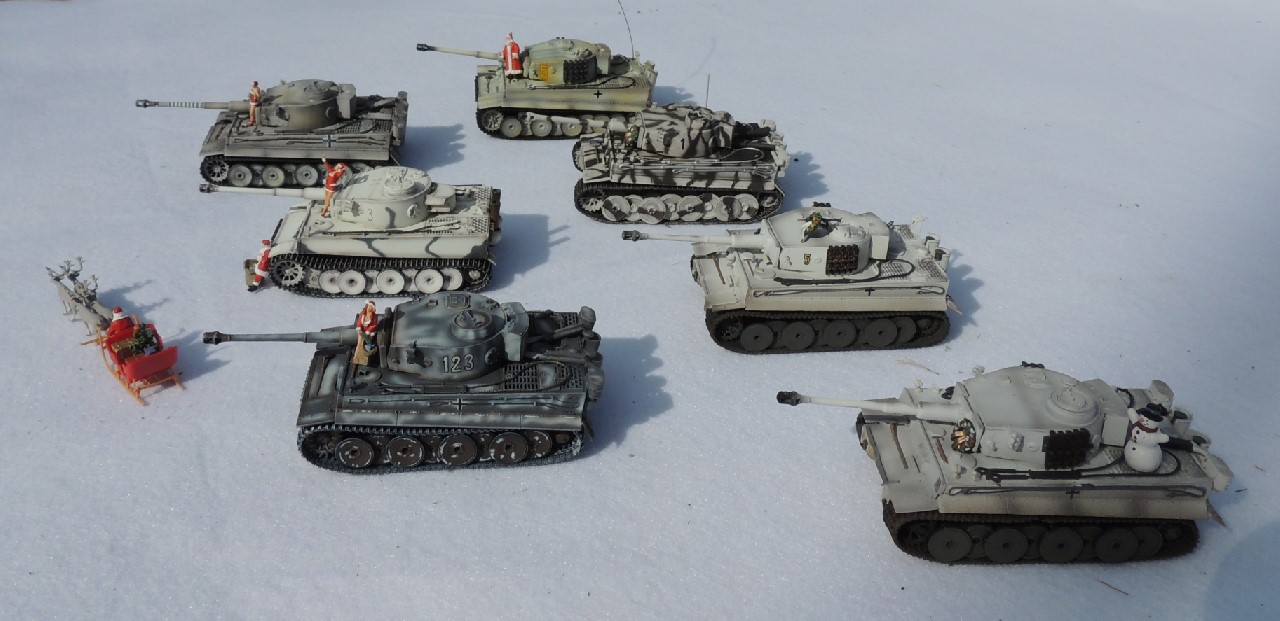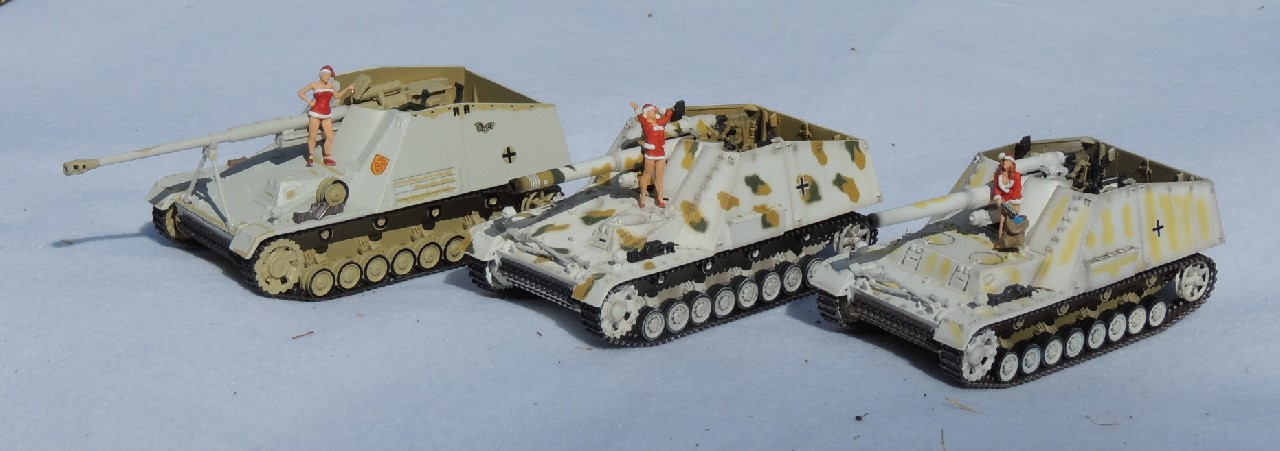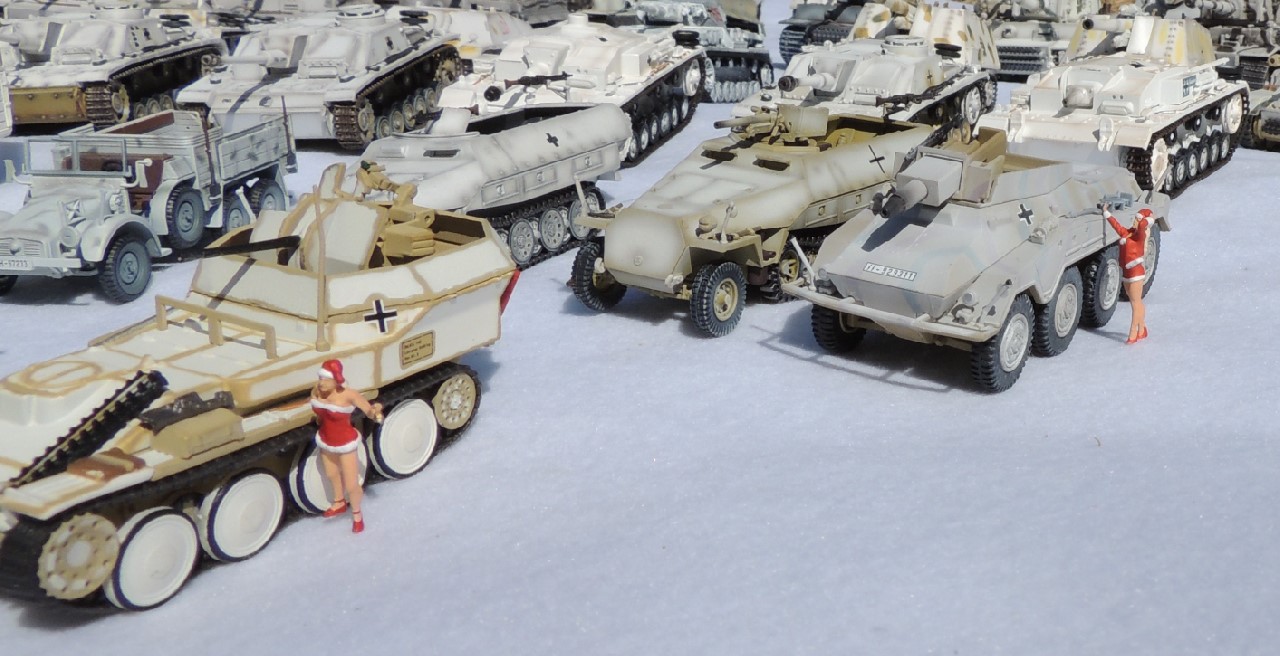Tank enthusiasts frequently admire a tank and blissfully identify its markings as well as its physical features — the version or type of hull, turret, gun, running gear, or tracks. This tendency to focus on the vehicle, rather than what it represents, holds especially true for Sherman tanks, which carry dizzying combinations of these various elements. We often forget, however, that each of these fighting vehicles was manned by five young men who had names and families and dreams, and many made the ultimate sacrifice inside those very vehicles. “Carole” stands out in that Douglas Kay, its gunner, survived the war and serves as a reminder of the human element we often ignore.
The Actual Tank
“Carole” was a Sherman Mark V Firefly belonging to the 13th/18th Royal Hussars Regiment of the 27th Armoured Brigade of the British Army. In its eight-month operational life, “Carole” participated in the D-Day invasion in Normandy in June 1944 and in Operation Market Garden in Holland in September 1944. It was destroyed in Germany in February 1945.
Below is the best known photo of “Carole” preparing to be loaded onto a Normandy-bound landing craft at the Port of Gosport in Southern England, on June 3, 1944. The photo is from the Imperial War Museum archives (IWM H38995) and is used here under their non-commercial license. Note the deep wading trunk at the rear of the hull, behind the gun, which itself has been traversed to face the rear for embarkation. 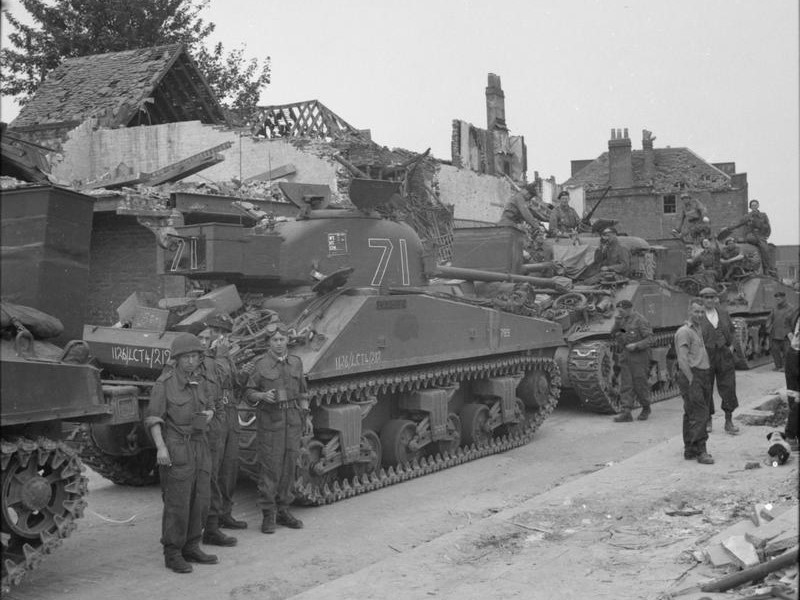 “Carole” and the 13th/18th Royal Hussars took part in the Normandy landings on Sword Beach on June 6, 1944, successfully spearheading the invasion force in support of the British 3rd Infantry Division. Sword Beach, assigned to the British Army, was the easternmost Allied landing site. All told, almost 30,000 allied troops came ashore at Sword Beach, with losses of 683 men. The IWM photo below shows “Carole” still equipped with its wading trunk.
“Carole” and the 13th/18th Royal Hussars took part in the Normandy landings on Sword Beach on June 6, 1944, successfully spearheading the invasion force in support of the British 3rd Infantry Division. Sword Beach, assigned to the British Army, was the easternmost Allied landing site. All told, almost 30,000 allied troops came ashore at Sword Beach, with losses of 683 men. The IWM photo below shows “Carole” still equipped with its wading trunk.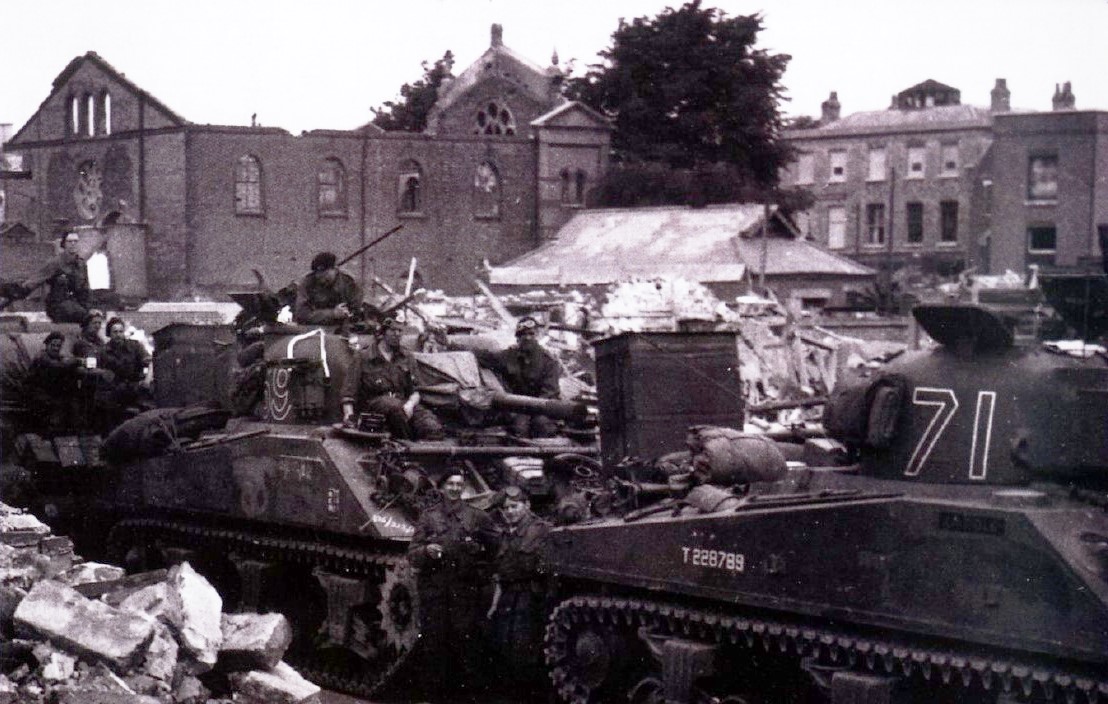 Below is another IWM photo (B5471) of “Carole” in the village of Bréville-les-Monts, on June 13, 1944, a week after D-Day. The Germans had occupied the village in early June and from there had been attacking British positions at Sword Beach. “Carole’s” unit, Squadron C of the 13th/18th Royal Hussars, successfully supported the 6th Airborne Division in securing Bréville, thereby protecting the beachhead. Forgive the graininess of the photo, which has been enlarged from a shot taken at considerable distance. Note that by this time the trunk had been removed.
Below is another IWM photo (B5471) of “Carole” in the village of Bréville-les-Monts, on June 13, 1944, a week after D-Day. The Germans had occupied the village in early June and from there had been attacking British positions at Sword Beach. “Carole’s” unit, Squadron C of the 13th/18th Royal Hussars, successfully supported the 6th Airborne Division in securing Bréville, thereby protecting the beachhead. Forgive the graininess of the photo, which has been enlarged from a shot taken at considerable distance. Note that by this time the trunk had been removed.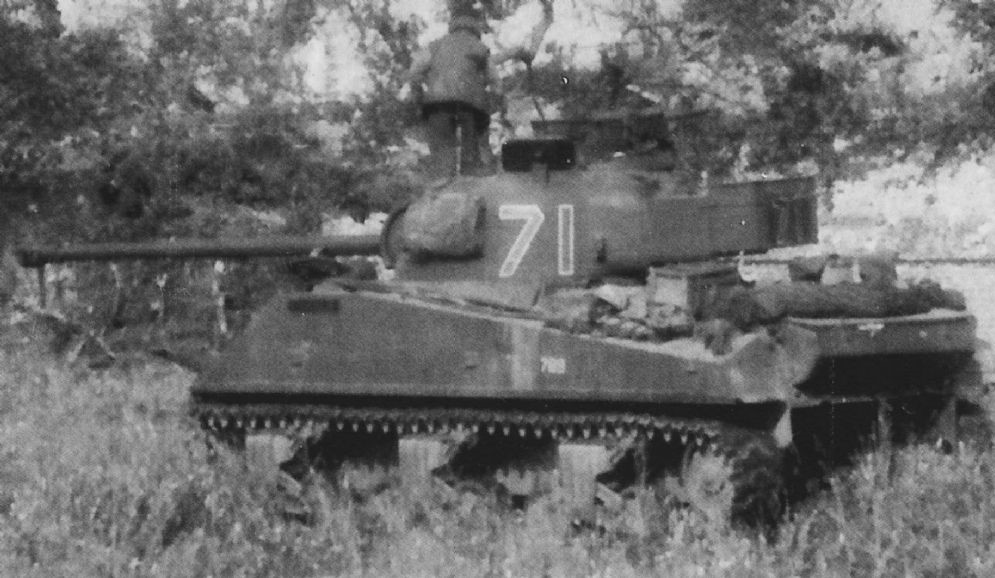 Once the landings were completed and secured, the British Army disbanded the 27th Armoured Brigade in July 1944, and “Carole” and the 13th/18th Royal Hussars were transferred to the 8th Armoured Brigade. During this time, “Carole” is credited with knocking out a Tiger and a Panther on August 11-12, 1944, towards the end of the Normandy campaign. As part of Operation Market Garden, “Carole” crossed the Nijmegen Bridge, a key Allied objective, on September 21, 1944. The fighting was so brutal at Nijmegen that it came to be known as “Little Omaha” and has been compared to Guam, Tarawa, and Omaha Beach.
Once the landings were completed and secured, the British Army disbanded the 27th Armoured Brigade in July 1944, and “Carole” and the 13th/18th Royal Hussars were transferred to the 8th Armoured Brigade. During this time, “Carole” is credited with knocking out a Tiger and a Panther on August 11-12, 1944, towards the end of the Normandy campaign. As part of Operation Market Garden, “Carole” crossed the Nijmegen Bridge, a key Allied objective, on September 21, 1944. The fighting was so brutal at Nijmegen that it came to be known as “Little Omaha” and has been compared to Guam, Tarawa, and Omaha Beach.
“Carole” was destroyed on February 12, 1945, in Goch, Germany, by an 88mm round that entered through the mantle and lodged itself in the radio box at the rear of the turret. The round killed Sgt. Fred Scamp, the commander, and Trooper Wilson, a substitute gunner who was filling in for Douglas Kay, who was on leave that particular day. Kay refers to himself as the “luckiest man” in the world because of this tragic but fortuitous event.
The Model
The Dragon 60250 Sherman Firefly is a special Dragon release issued during the 2006 Dragon Expo in Europe. It is one of the most sought-after Dragon fireflies, and for good reason. A look at the photos below reveal a finely crafted model from Dragon’s heyday, when workmanship was at its apex. The model represents “Carole” after the landing at Normandy, once the wading trunk had been removed. “Carole” was assigned to “C” Squadron, necessitating that its name begin with that letter. Sgt. Fred Scamp, the tank commander, named “Carole” after his daughter, who was born in 1944. In the photo below, note the red circle indicating “C” Squadron, just aft of the name. A triangle would indicate “A” Squadron, while a square would indicate “B” Squadron.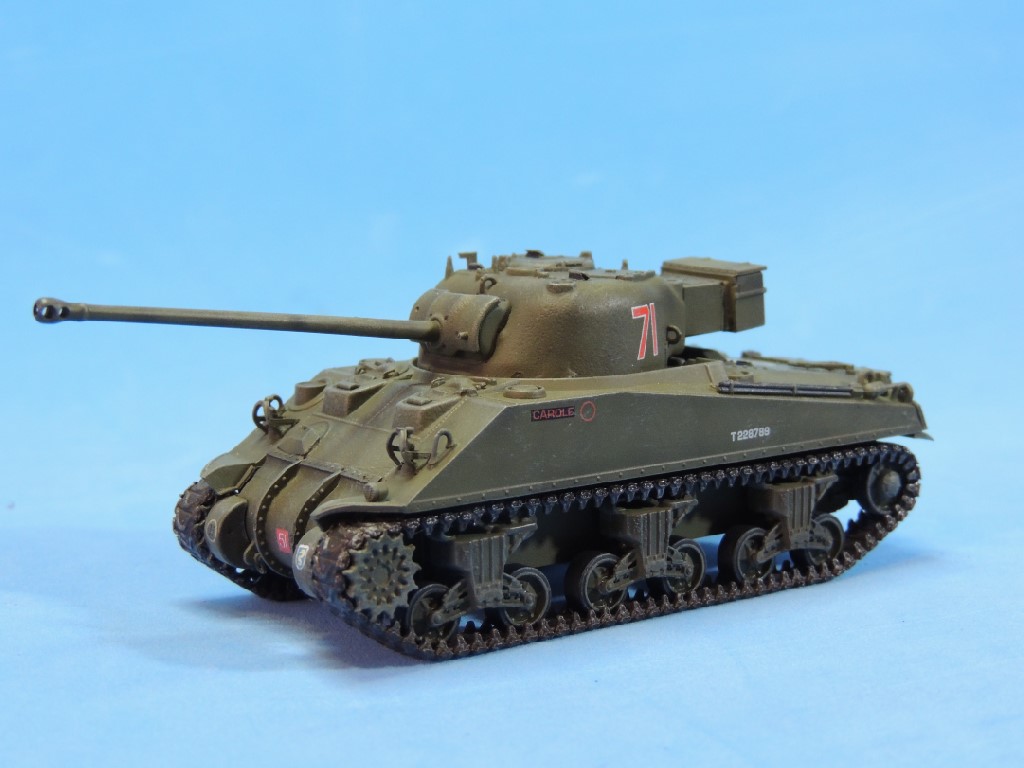 Below is a front view photo. Note that “Carole” has the early bolted three-piece transmission cover, as opposed to the cast one-piece cover. Note also that the model does not have the stowage box above the transmission cover visible in the first photo of the actual tank above. This is not a mistake. The stowage bin was temporarily moved from its permanent place at the rear of the hull to the front of the hull to allow the wading trunk to be installed. Once the tank landed and the trunk was removed, the stowage bin was reinstalled in its original place on the rear plate of the hull. Finally, note that while Dragon has often bungled the tracks on its Shermans, “Carole” is equipped with the correct T54E1 steel chevron tracks recognizable in the aforementioned photo.
Below is a front view photo. Note that “Carole” has the early bolted three-piece transmission cover, as opposed to the cast one-piece cover. Note also that the model does not have the stowage box above the transmission cover visible in the first photo of the actual tank above. This is not a mistake. The stowage bin was temporarily moved from its permanent place at the rear of the hull to the front of the hull to allow the wading trunk to be installed. Once the tank landed and the trunk was removed, the stowage bin was reinstalled in its original place on the rear plate of the hull. Finally, note that while Dragon has often bungled the tracks on its Shermans, “Carole” is equipped with the correct T54E1 steel chevron tracks recognizable in the aforementioned photo.
Dragon faithfully rendered on the transmission cover the colorful and distinctive markings so characteristic of British tanks. Starting from the left, the “33” inside a yellow circle is a bridge classification number, indicating that the Firefly weighed 33 tons, as compared to a standard 30-ton Sherman. The “51” inside the red box identifies the regiment to which “Carole” belonged. The 27th Armoured Brigade had three regiments: the 13th/18th Royal Hussars were assigned “51”; the Staffordshire Yeomanry, “52”; and East Riding Yeomanry, “53.” The yellow seahorse on a blue shield, colloquially known as the “pregnant pilchard,” is the emblem of the 27th Armoured Brigade. The seahorse was a reference to the cavalry roots of its regiments. 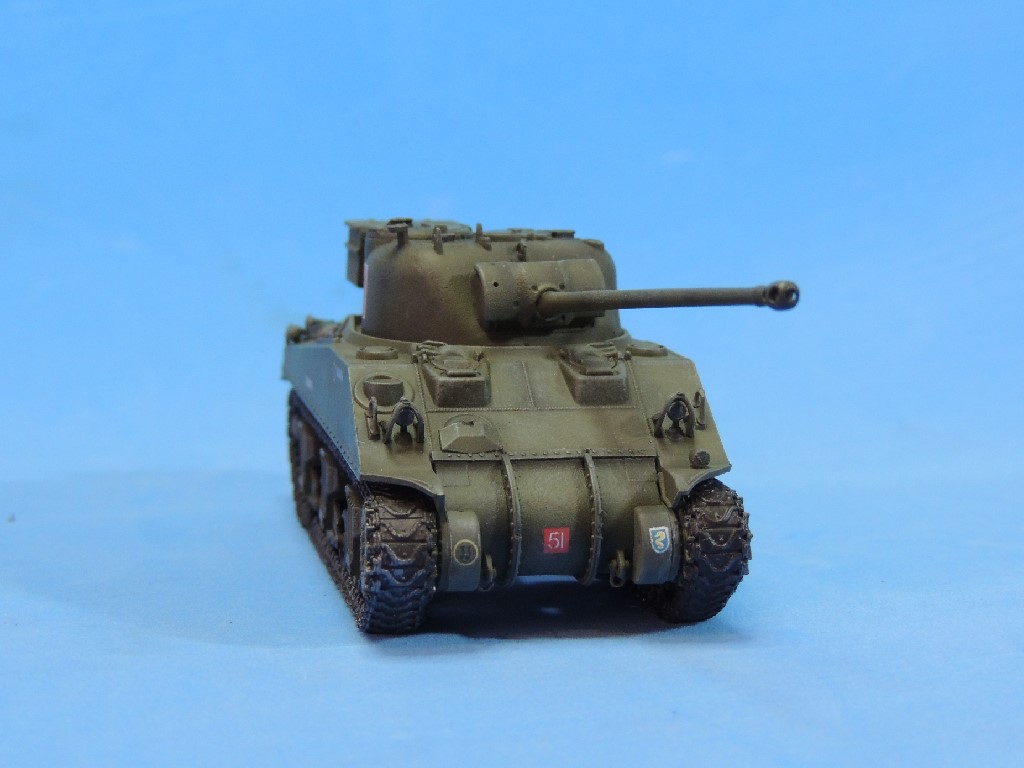 Below is a starboard profile photo of “Carole.” Note the cast surface on the cheek of the turret, which differs from the smooth surface of the metal on the hull — another example of Dragon’s outstanding attention to detail. The British Firefly wielded a 76.2mm gun and the length of the barrel was a whopping 13 ft. 9 in. Incidentally, each troop comprised four tanks — one 17-pounder Firefly and three 75mm Shermans. The other tanks in “Carole’s” 2nd Troop were “Charmer” (68), “Cameo” (69), and “Cavalier” (70).
Below is a starboard profile photo of “Carole.” Note the cast surface on the cheek of the turret, which differs from the smooth surface of the metal on the hull — another example of Dragon’s outstanding attention to detail. The British Firefly wielded a 76.2mm gun and the length of the barrel was a whopping 13 ft. 9 in. Incidentally, each troop comprised four tanks — one 17-pounder Firefly and three 75mm Shermans. The other tanks in “Carole’s” 2nd Troop were “Charmer” (68), “Cameo” (69), and “Cavalier” (70).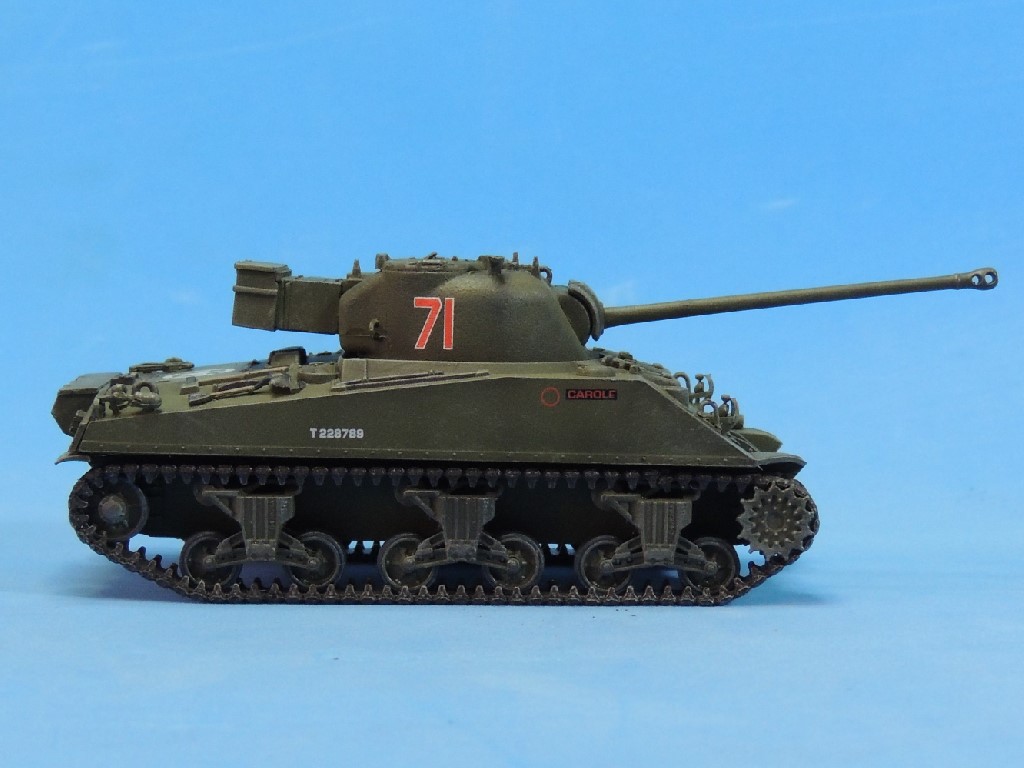 Note the “71” on a square black oilcloth on the face of the blanket box in the photo below. The black square was intended to provide more contrast with the red number, making it more visible. As previously mentioned, the model represents “Carole” after it had landed and the wading trunk had been removed with the stowage box moved back to its original place on the rear plate of the hull. Finally, note Dragon’s signature drybrushing that highlights the edges throughout the tank, providing a “worn” look.
Note the “71” on a square black oilcloth on the face of the blanket box in the photo below. The black square was intended to provide more contrast with the red number, making it more visible. As previously mentioned, the model represents “Carole” after it had landed and the wading trunk had been removed with the stowage box moved back to its original place on the rear plate of the hull. Finally, note Dragon’s signature drybrushing that highlights the edges throughout the tank, providing a “worn” look.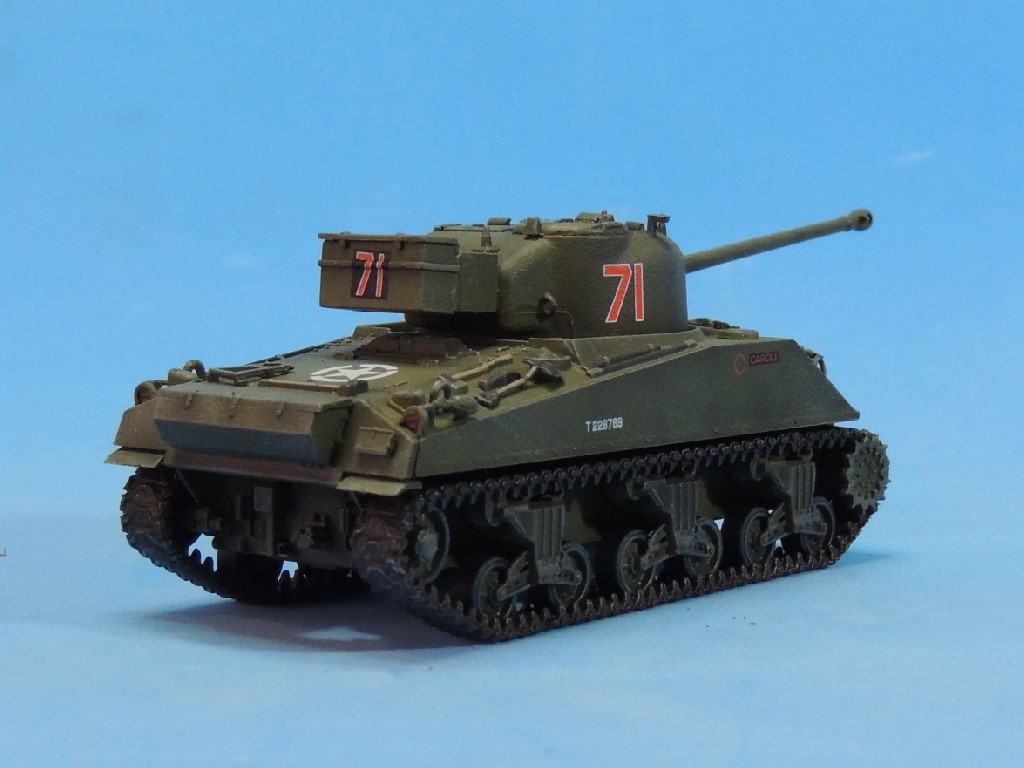 The semi-overhead shot below provides a view of the commander’s round hatch as well as the loader’s rectangular hatch on the top of the turret. Note the radio box attached to the back of the turret. In order to fit the huge 76.2mm gun in the 75mm turret, the British removed the radio from the interior and attached it to the rear of the turret. Attached behind the radio box is a blanket box. Note the War Department identification number “T 228789.” Of course, the “T” indicates “tank.” Among others, an “L” before the number would indicate a lorry, an “M” a car, and an “S” a self-propelled gun.
The semi-overhead shot below provides a view of the commander’s round hatch as well as the loader’s rectangular hatch on the top of the turret. Note the radio box attached to the back of the turret. In order to fit the huge 76.2mm gun in the 75mm turret, the British removed the radio from the interior and attached it to the rear of the turret. Attached behind the radio box is a blanket box. Note the War Department identification number “T 228789.” Of course, the “T” indicates “tank.” Among others, an “L” before the number would indicate a lorry, an “M” a car, and an “S” a self-propelled gun. 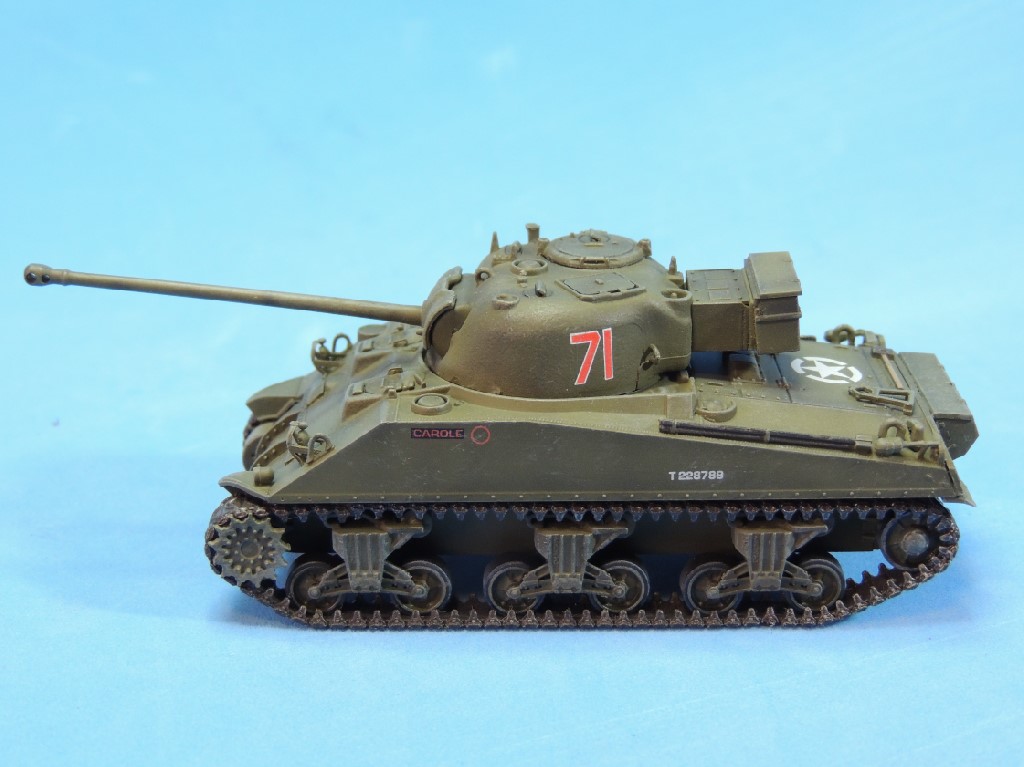 Beyond the Call of Duty
Beyond the Call of Duty
Probably the most outstanding feature of the Dragon piece is the accuracy of the turret. The close-up photo below clearly shows that the turret of the “Carole” did not have a pistol port.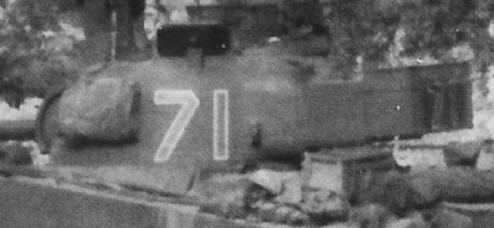 Firefly turrets were converted 75mm turrets, which had a pistol port on the rear port side of the turret. In April 1943, the U.S. Ordnance Department determined that it was a ballistic hazard and ordered builders to eliminate it from the turret. The response from the field was so negative, however, that the Ordnance Department reversed the order in July 1943. Still, a number of 75mm turrets without the pistol port were produced during those three months, and “Carole” appears to be one of those.
Firefly turrets were converted 75mm turrets, which had a pistol port on the rear port side of the turret. In April 1943, the U.S. Ordnance Department determined that it was a ballistic hazard and ordered builders to eliminate it from the turret. The response from the field was so negative, however, that the Ordnance Department reversed the order in July 1943. Still, a number of 75mm turrets without the pistol port were produced during those three months, and “Carole” appears to be one of those.
The side-by-side photos below from the Sherman Minutia Website show the two different Sherman 75mm turrets as regards the pistol port — the common one with a pistol port and the uncommon one without. 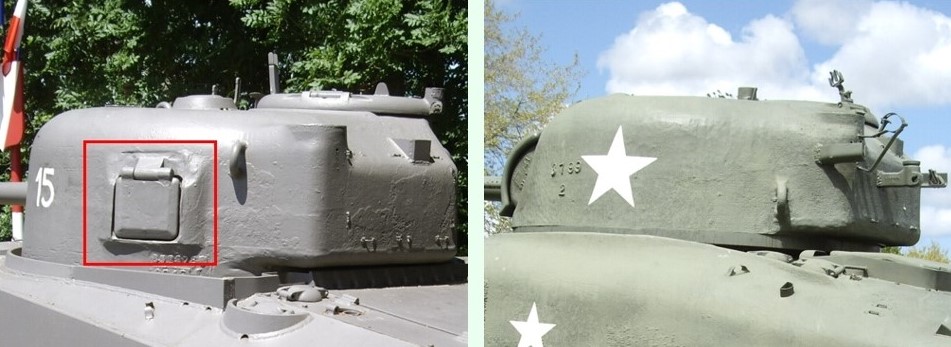 Dragon brought us two terrific British Fireflies: the Dragon 60250 “Carole” (right) and the 60251 “Velikye Luki” (left) in the side-by-side photo below. Other than the markings and the addition of the blanket box on the “Carole,” the two are nearly identical. Obviously, the most important difference is the absence of the pistol port on the turret of the “Carole” – highlighted in yellow on the “Velikye Luki.” Dragon could have easily taken a short cut and simply used the same common turret on both. Instead Dragon was faithful to both tanks, and produced two different turrets — in my view, a commendable decision.
Dragon brought us two terrific British Fireflies: the Dragon 60250 “Carole” (right) and the 60251 “Velikye Luki” (left) in the side-by-side photo below. Other than the markings and the addition of the blanket box on the “Carole,” the two are nearly identical. Obviously, the most important difference is the absence of the pistol port on the turret of the “Carole” – highlighted in yellow on the “Velikye Luki.” Dragon could have easily taken a short cut and simply used the same common turret on both. Instead Dragon was faithful to both tanks, and produced two different turrets — in my view, a commendable decision.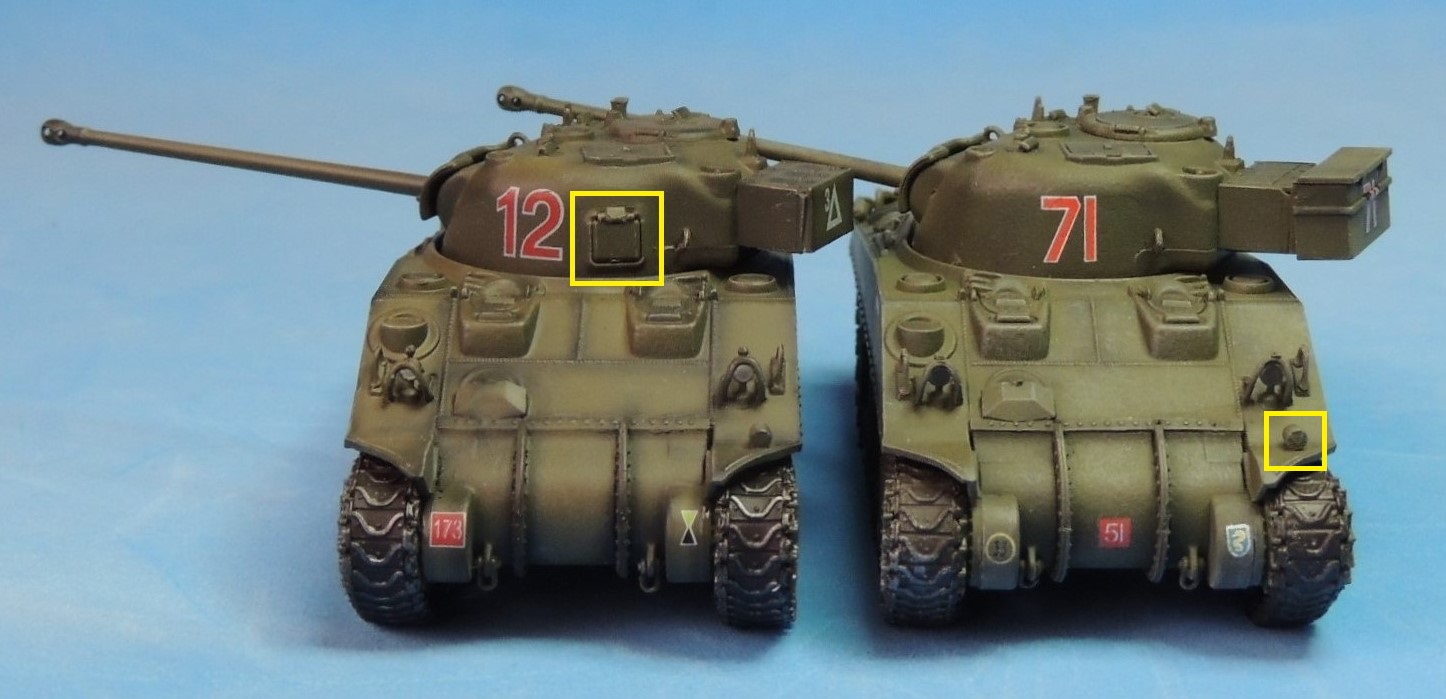 In that same vein, note the siren on the front port side fender just above the tracks. If you click on the photo you will find that the siren has a “V” for victory grill used on the actual sirens — a diminutive detail but indicative of Dragon’s erstwhile zeal.
In that same vein, note the siren on the front port side fender just above the tracks. If you click on the photo you will find that the siren has a “V” for victory grill used on the actual sirens — a diminutive detail but indicative of Dragon’s erstwhile zeal.
A Little Back Rub
Forgive the lame pun, but “Carole’s” only fault — the “rub” — is that Dragon failed to include markings on the rear plate of the tank hull. There are no clear photos of “Carole” from the rear, though barely visible on one of the photos above is the “51” regiment number on the port side of the rear plate. However, the photo below from British Tanks in Normandy by Ludovic Fortin clearly shows that other tanks of the 13th/18th Hussars — this is “Balaclava” — carried both the “51” regiment number and seahorse markings on the rear plate.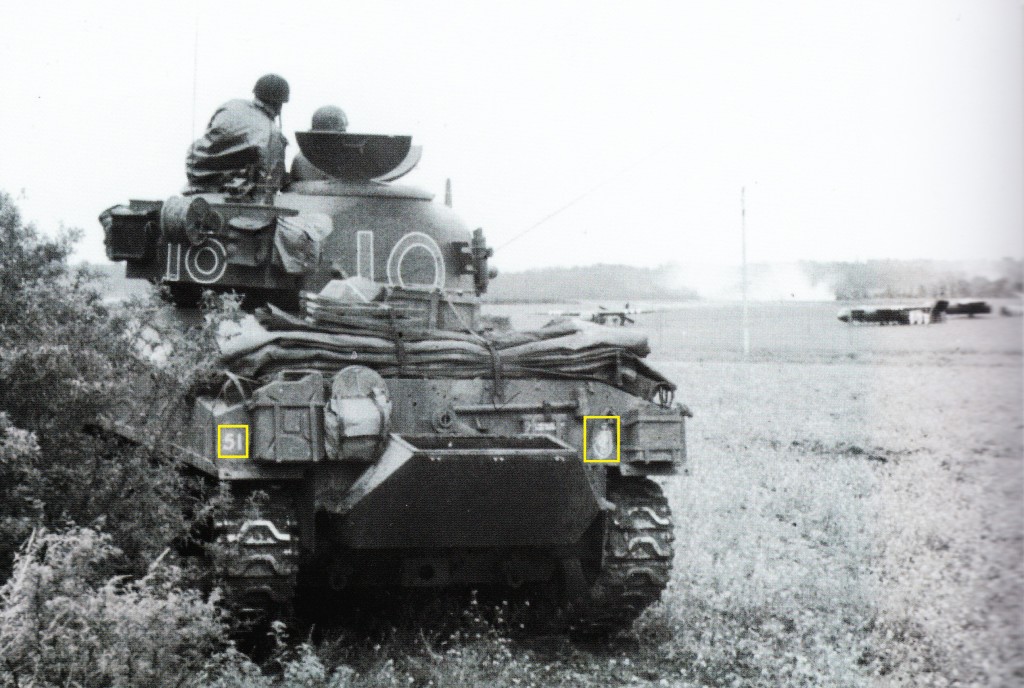 Below is a corresponding rear view photo of “Carole” sans markings.
Below is a corresponding rear view photo of “Carole” sans markings. The Upshot
The Upshot
There is no question that the Dragon 60250 Firefly is a little gem — a rare combination that brings together human interest, historical significance, and accuracy in detail. From the transmission housing to the rear plate and from the steel tracks to the turret hatches, this piece is well crafted. The accuracy of the turret — with its cast surface, radio box, blanket bin, lack of a pistol port, and markings — makes for an outstanding model. The superb finish, light drybrushing, and crisp markings throughout the tank make this an exceptional piece.
The Profile
In 2005, Military Modelling magazine conducted a series of interviews with Douglas Kay, resulting in a terrific, well-illustrated article in its July 2005 issue that featured “Carole” on its cover. The beautiful color profile below comes from that article. It’s a sure bet that Dragon used this profile as its guide. 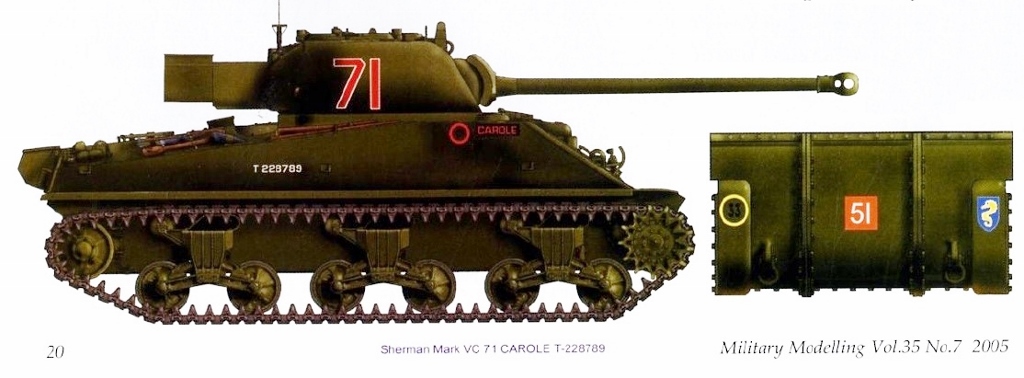 What little information there is about the actual “Carole” comes from that issue. Should the reader be interested in finding it, below is a photo of the magazine cover. The triptych also includes a photo of 19-year-old Kay in 1944 and Mr. Kay in his 80’s in 2005.
What little information there is about the actual “Carole” comes from that issue. Should the reader be interested in finding it, below is a photo of the magazine cover. The triptych also includes a photo of 19-year-old Kay in 1944 and Mr. Kay in his 80’s in 2005.
Finally, so we can put faces to “Carole,” below is a lagniappe photo of the crew brewing up. From left to right: Fred Shaw (loader/radio operator), Douglas Kay (gunner), Fred Scamp (commander), and Bill Humphries (driver).
I hope you enjoyed the post. If something looks amiss, please let me know. I would be delighted to correct inaccurate information so that this may be useful for other 1/72 scale collectors and wargamers. As always, comments, questions, corrections, and observations are welcome. Stay tuned for a simple diorama of “Carole” in the next post.

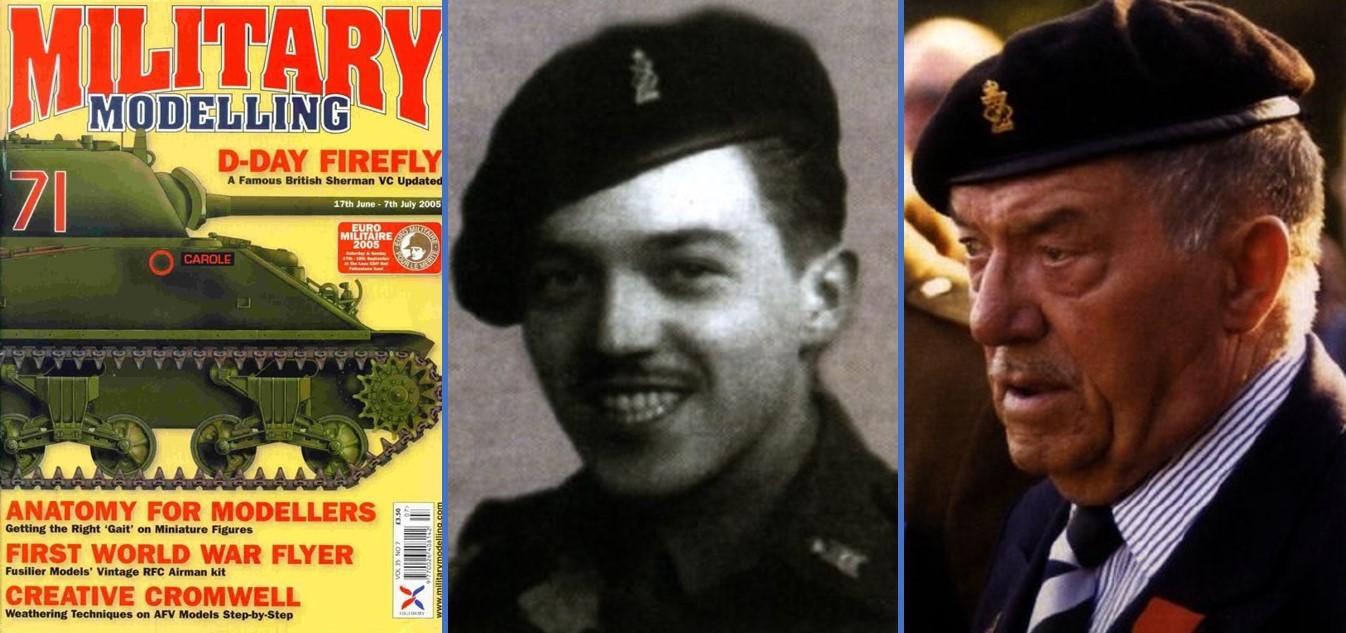
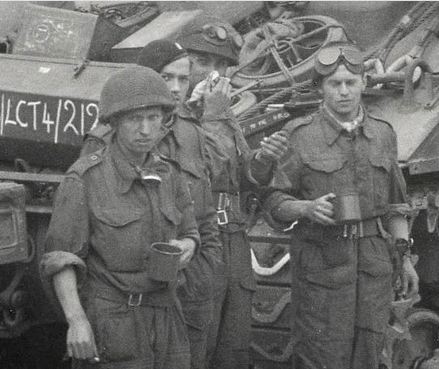
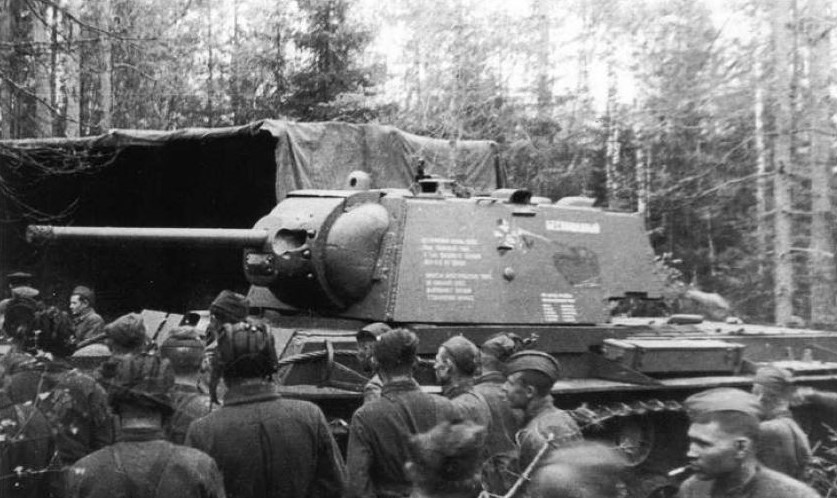


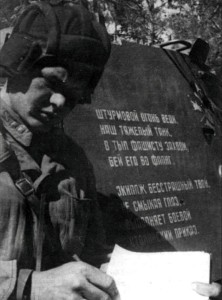
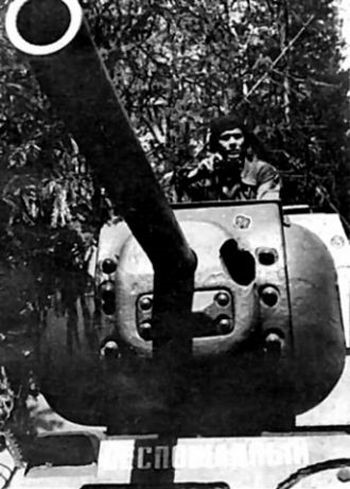
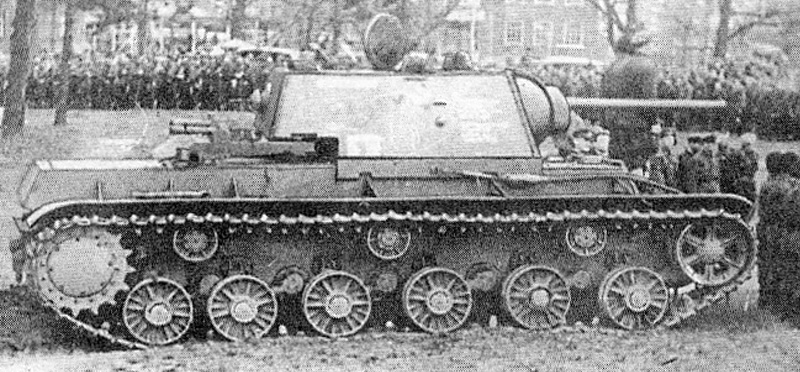
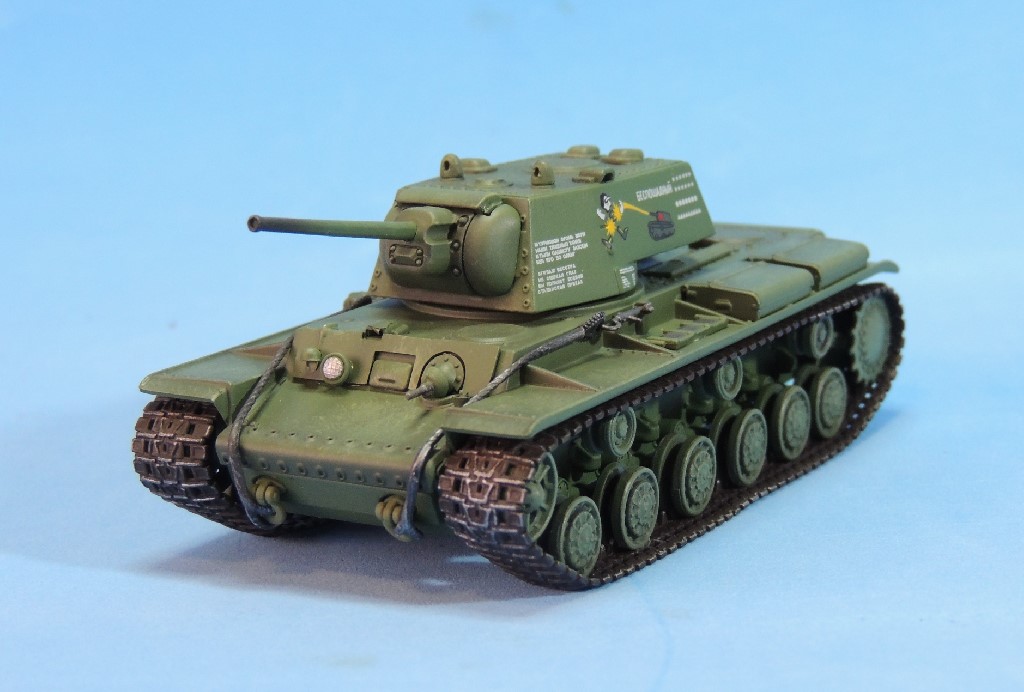
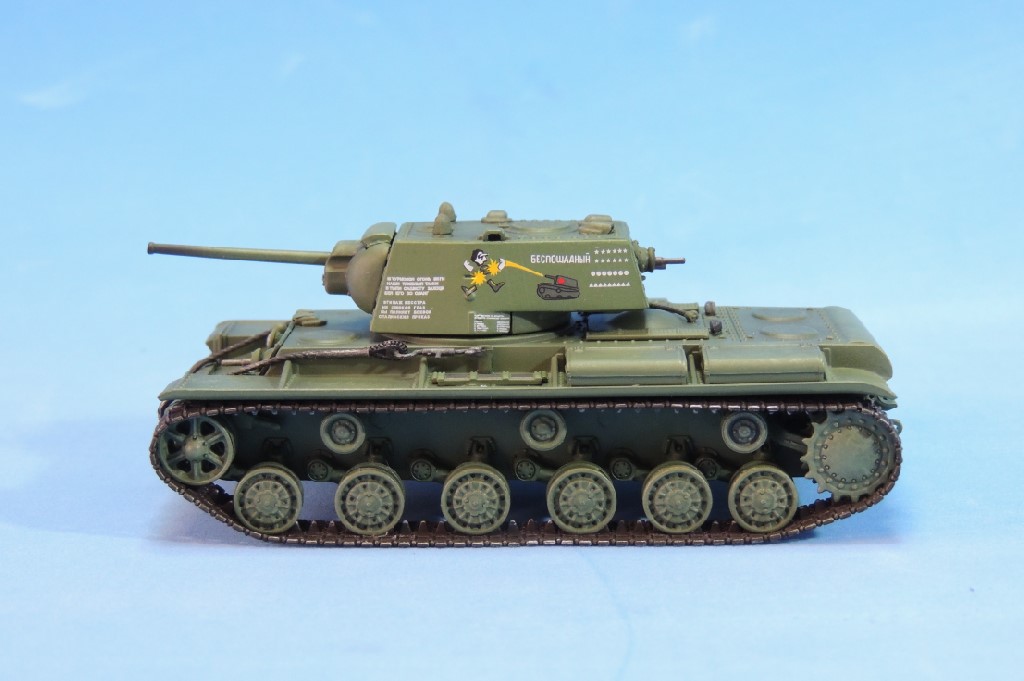
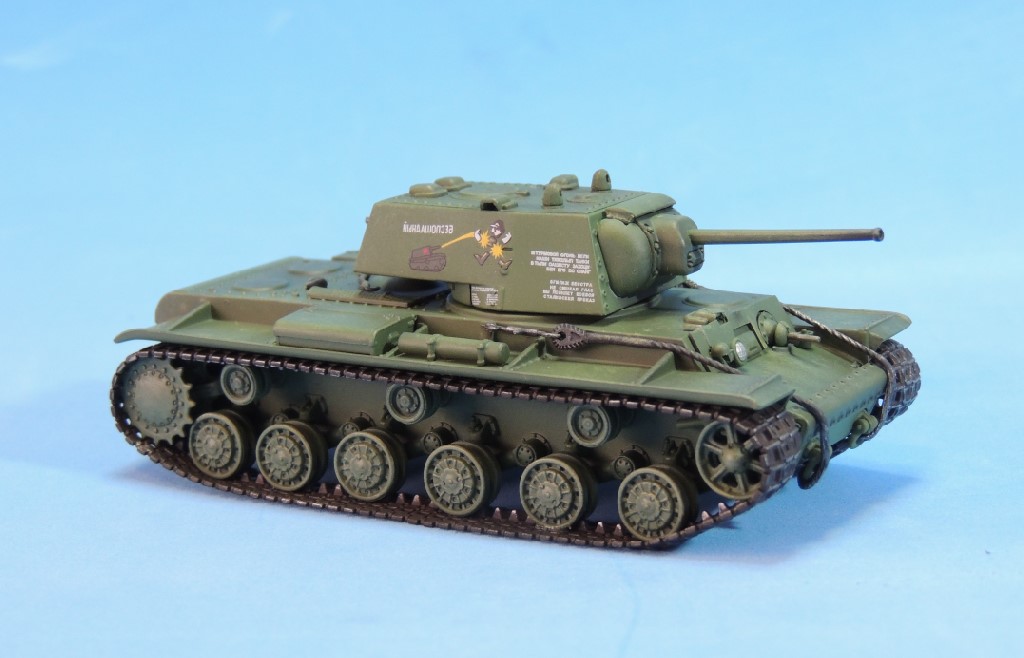
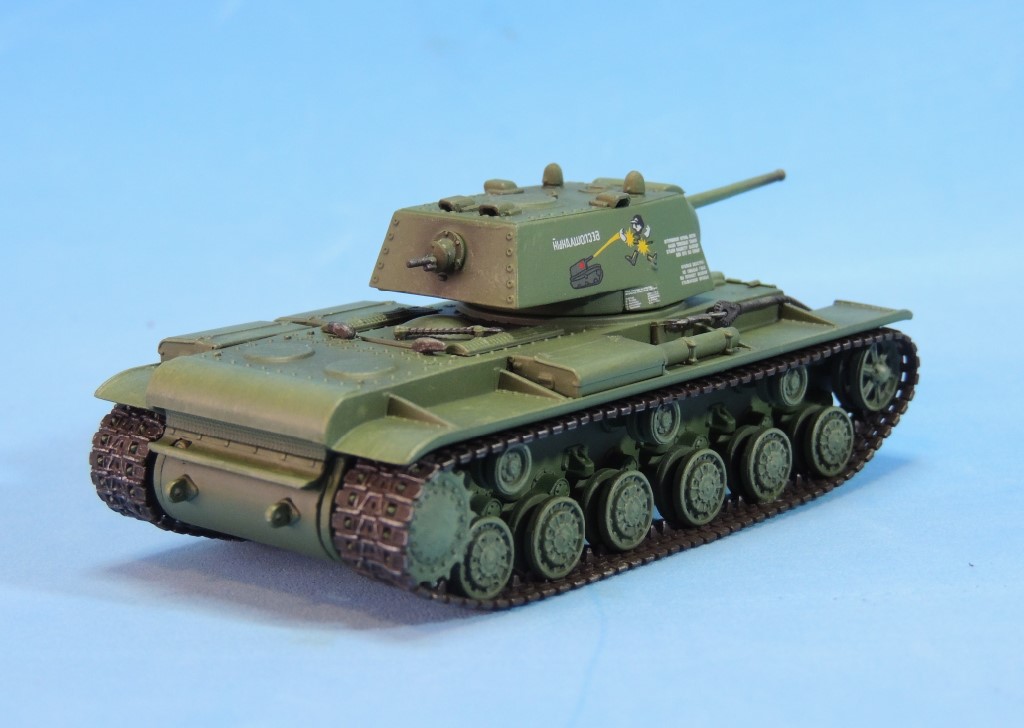
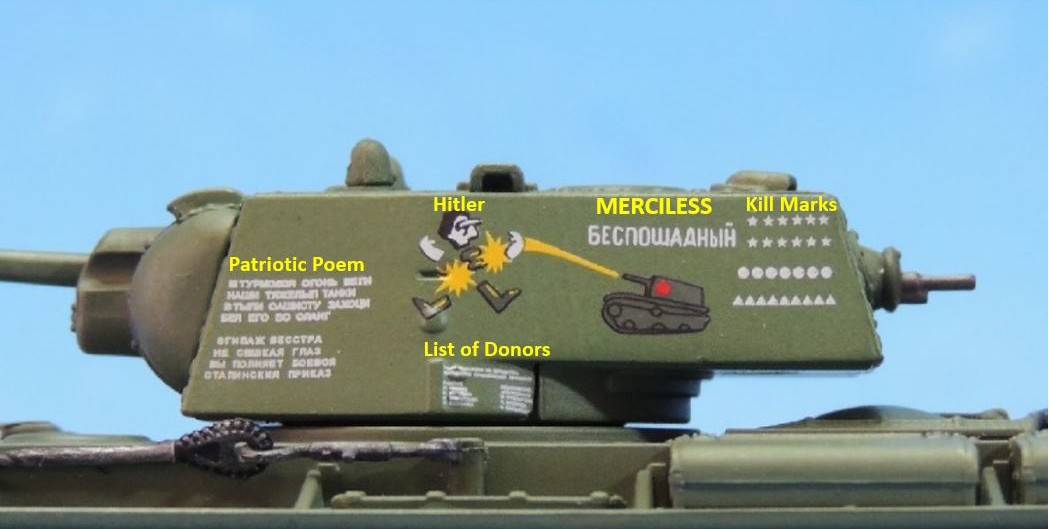
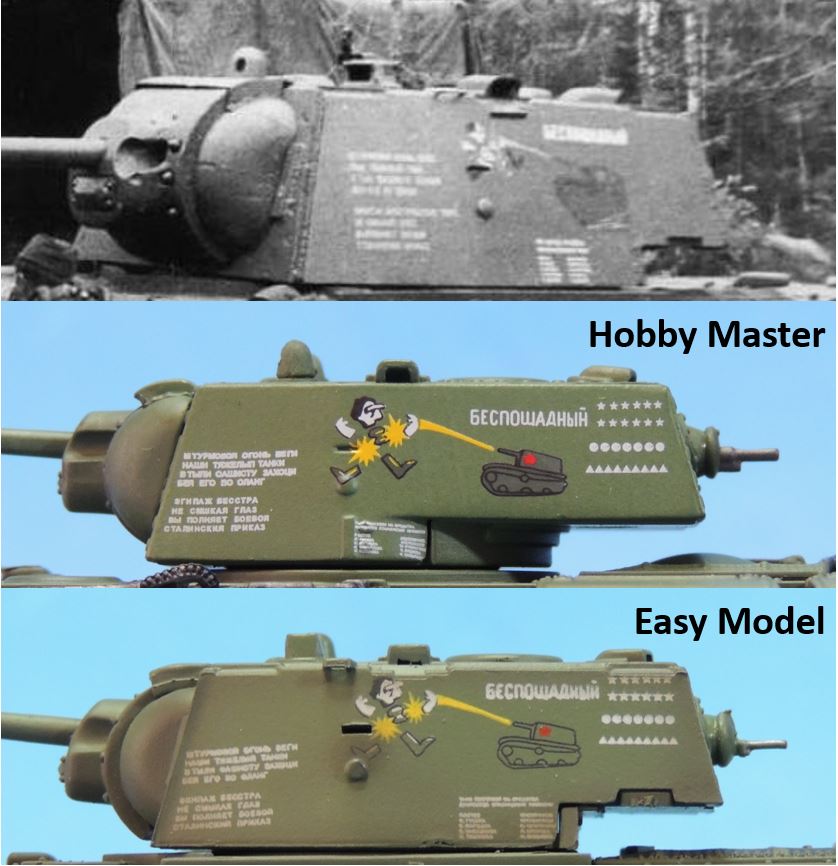
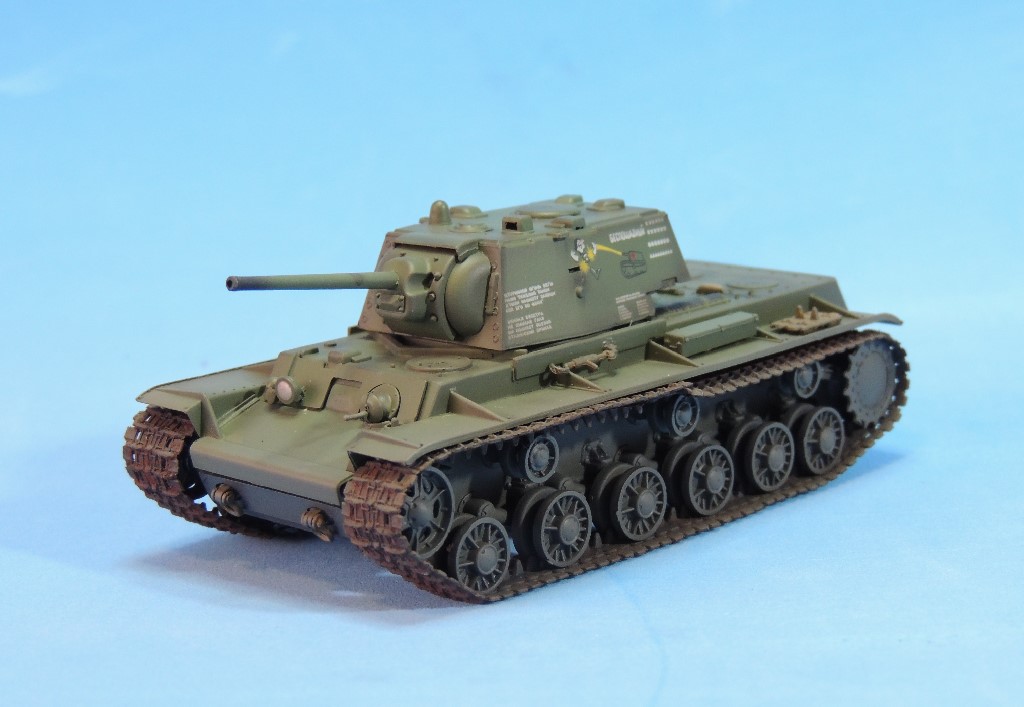
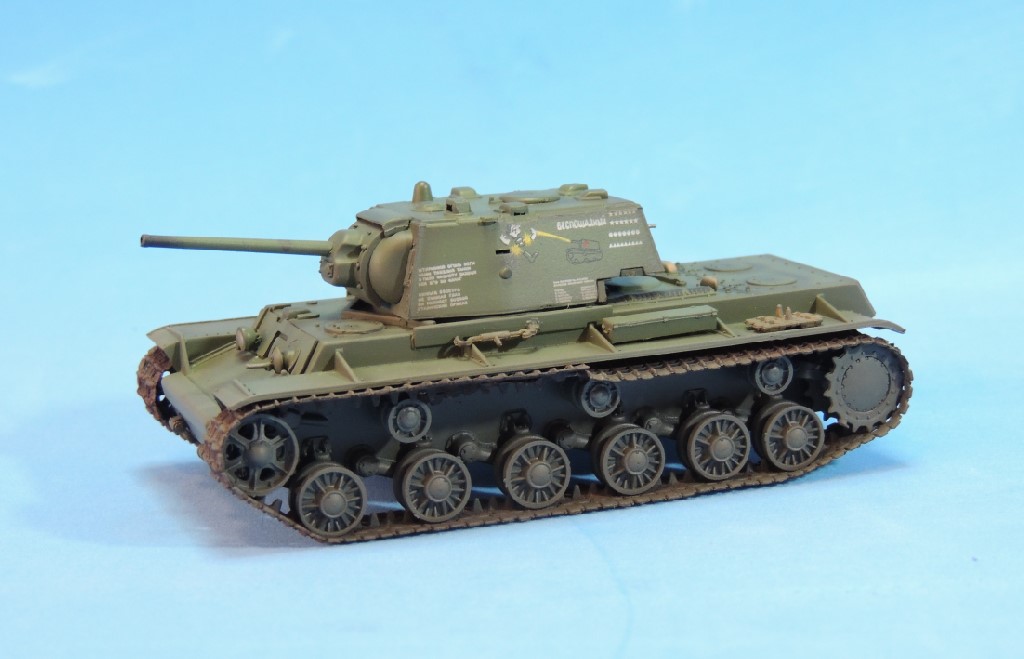
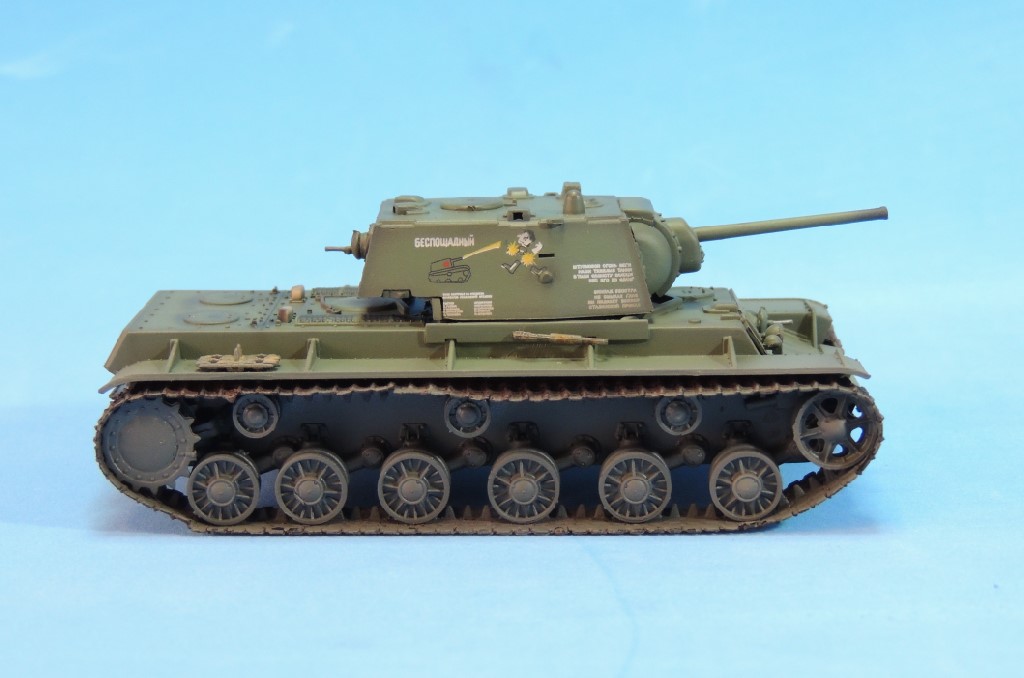
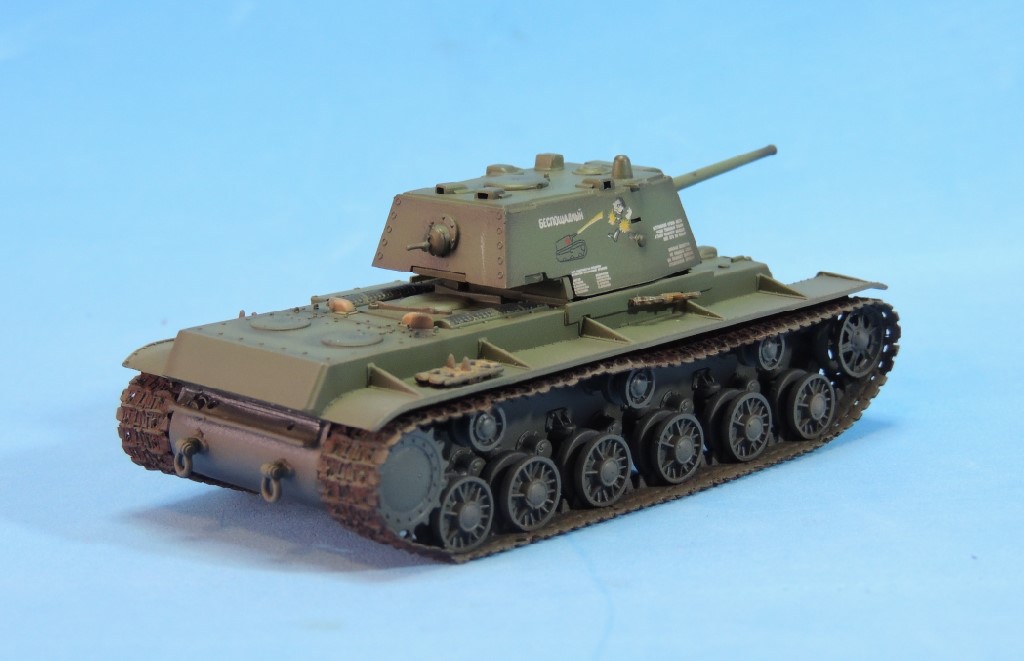
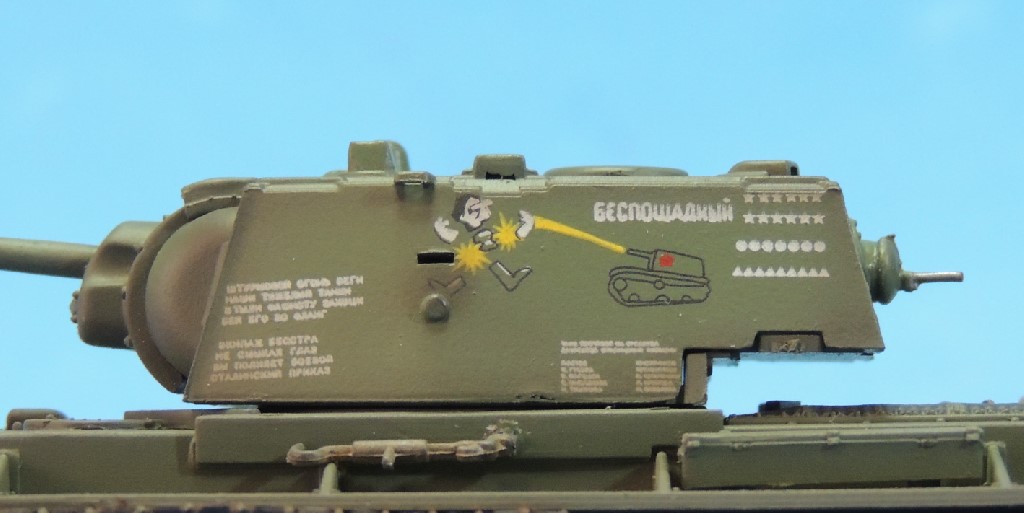
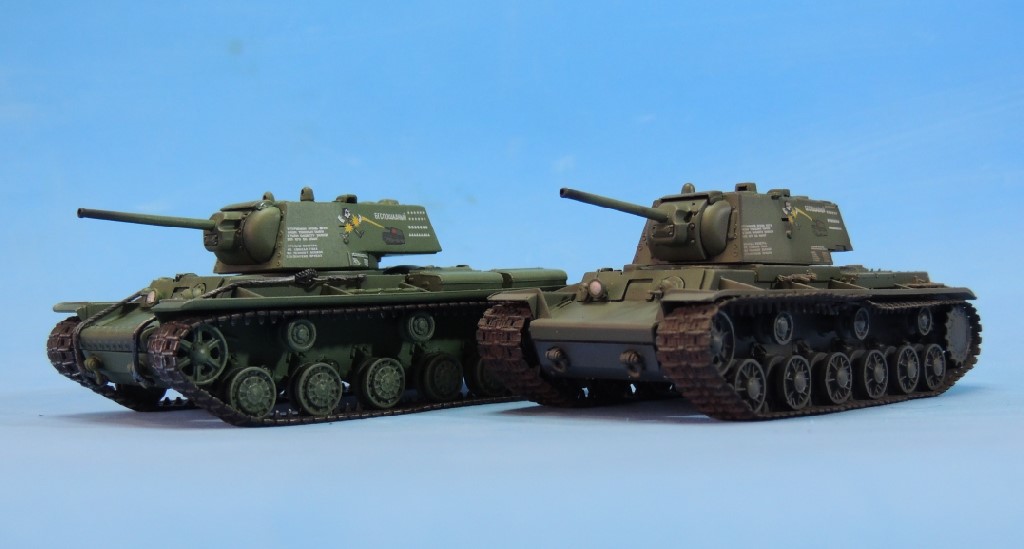
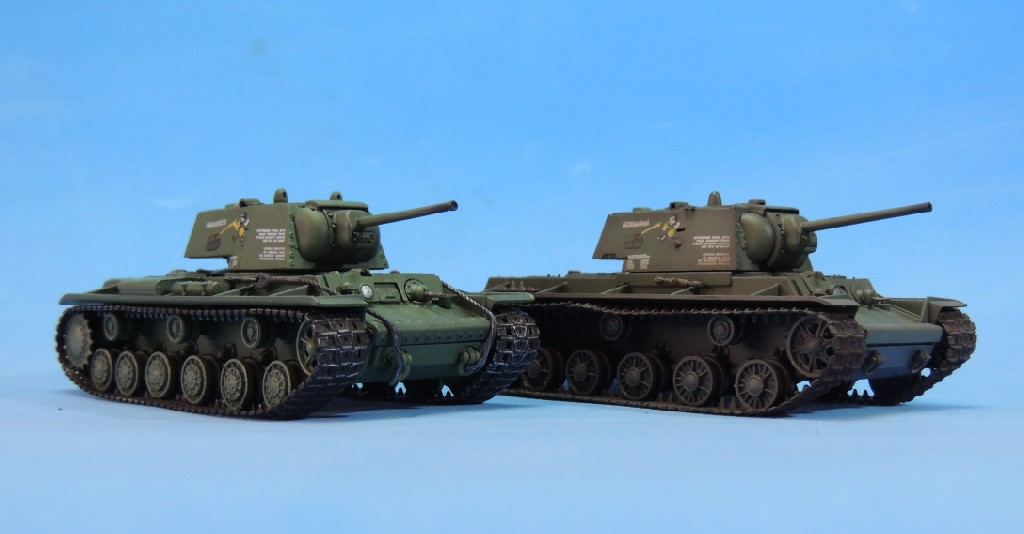


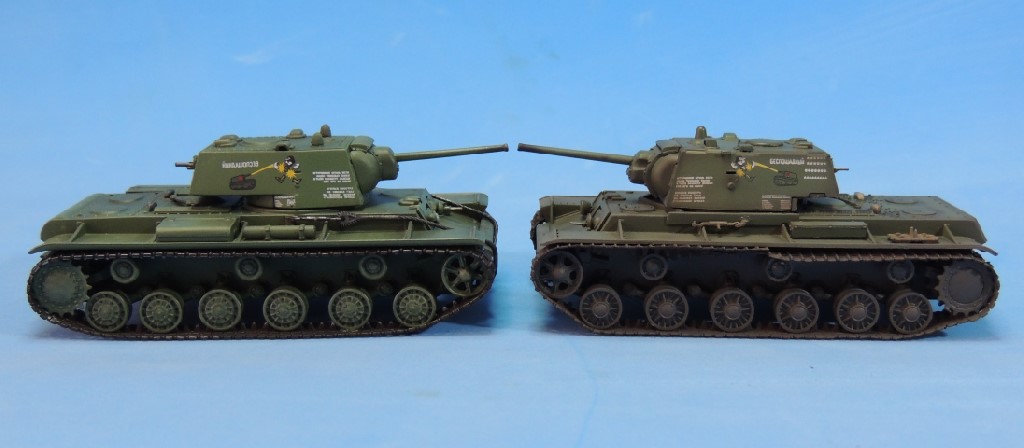
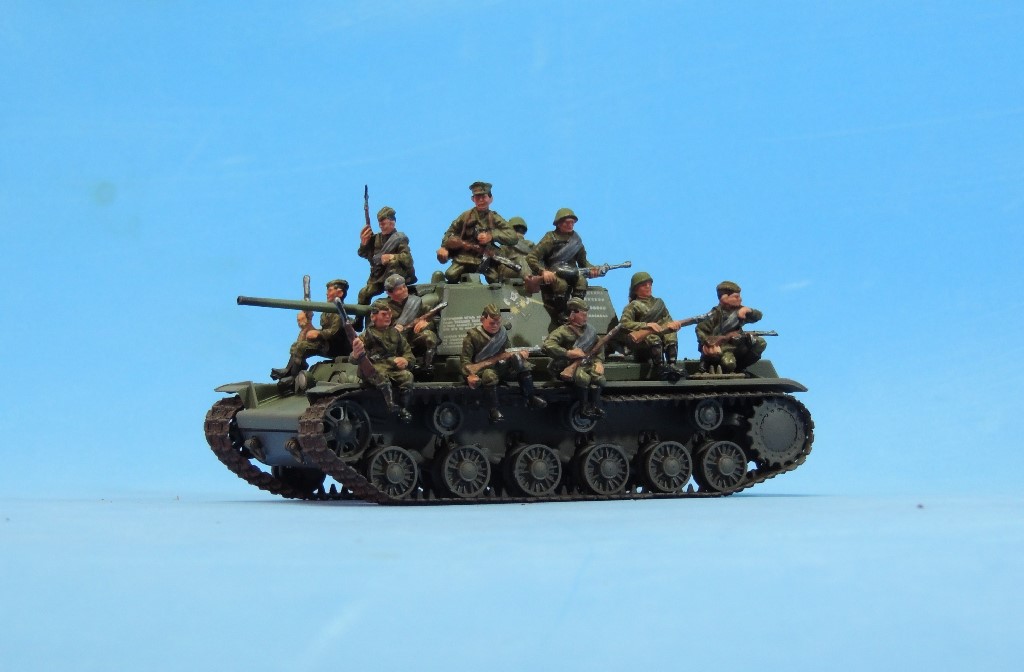
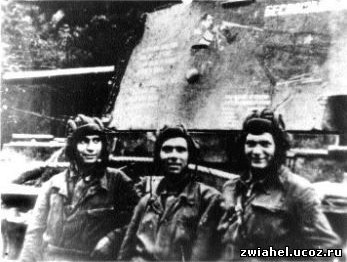
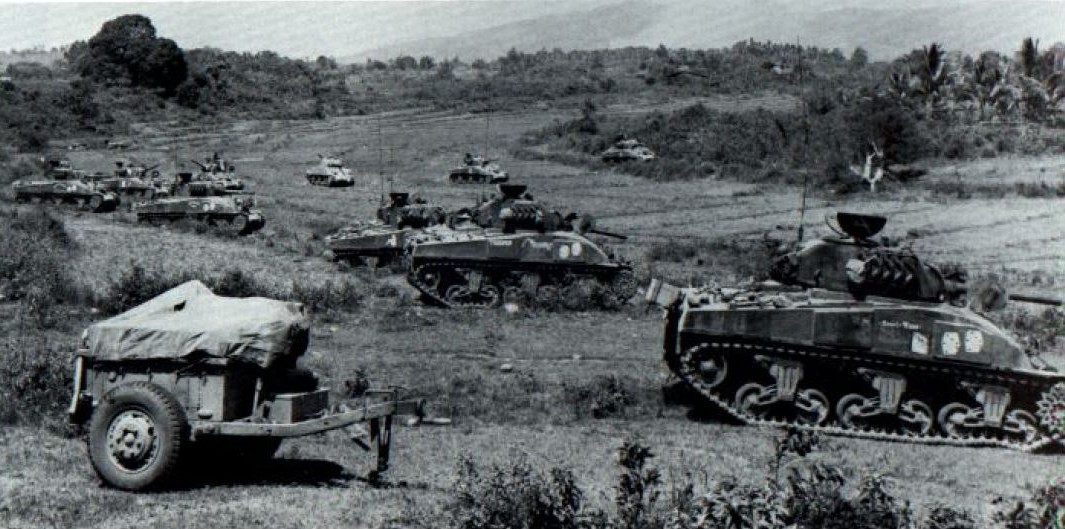
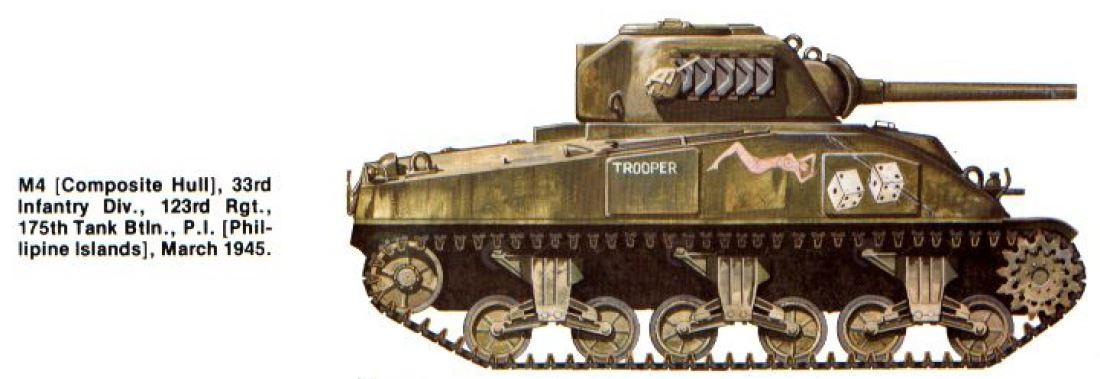
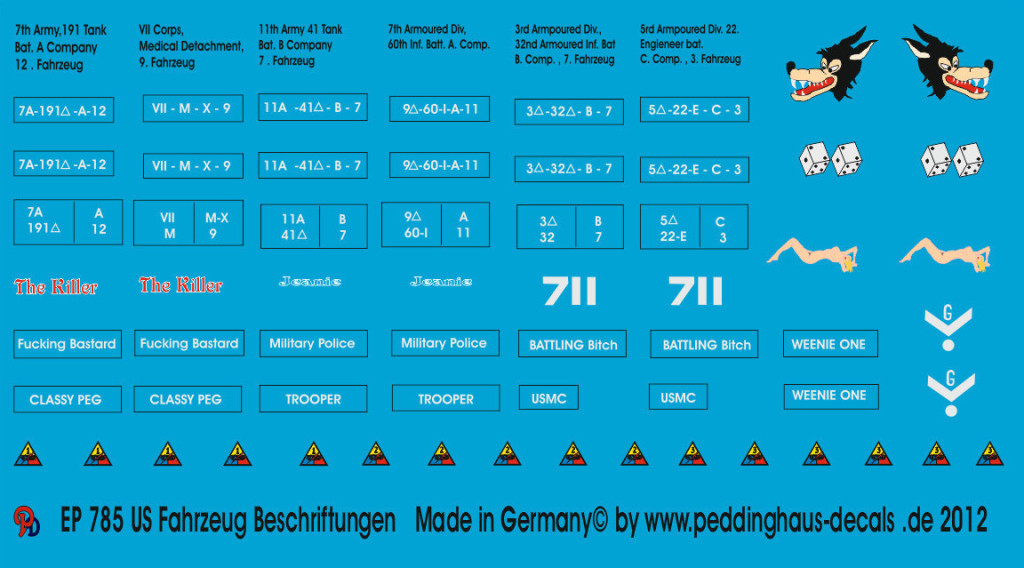

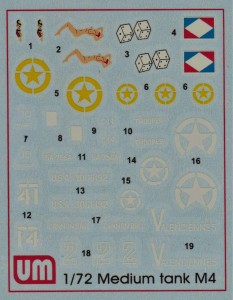
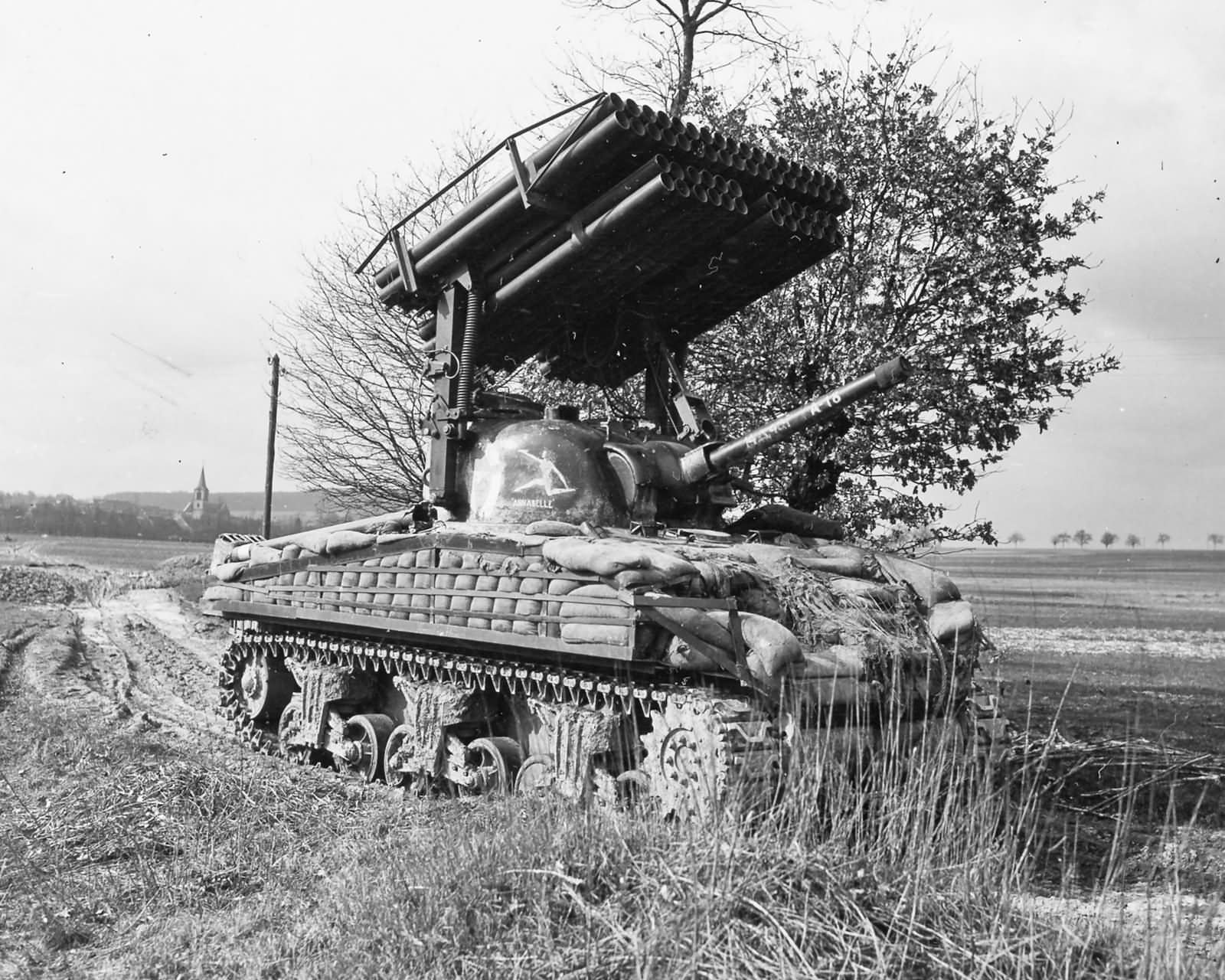
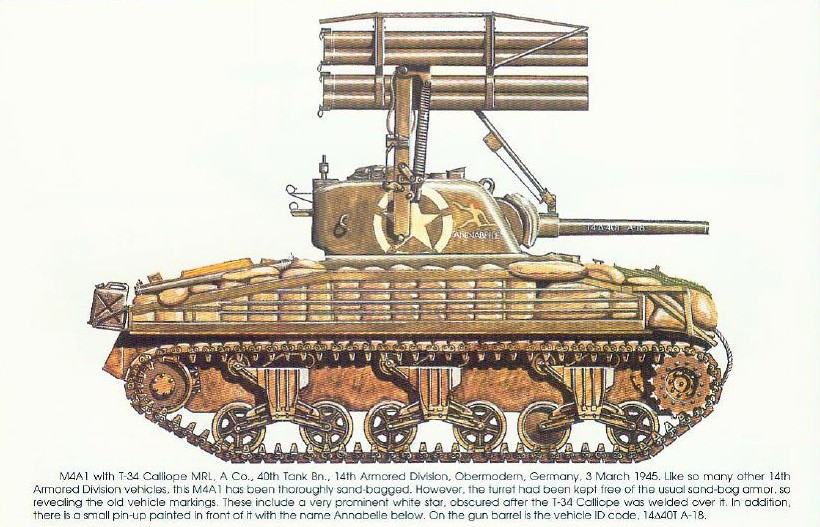

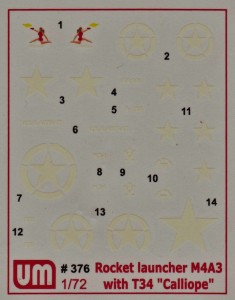
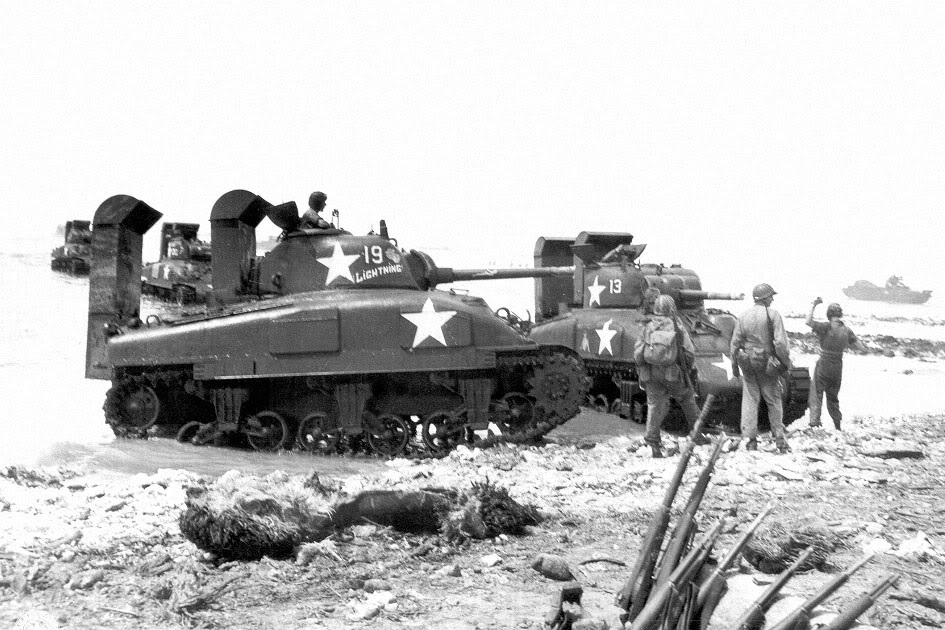
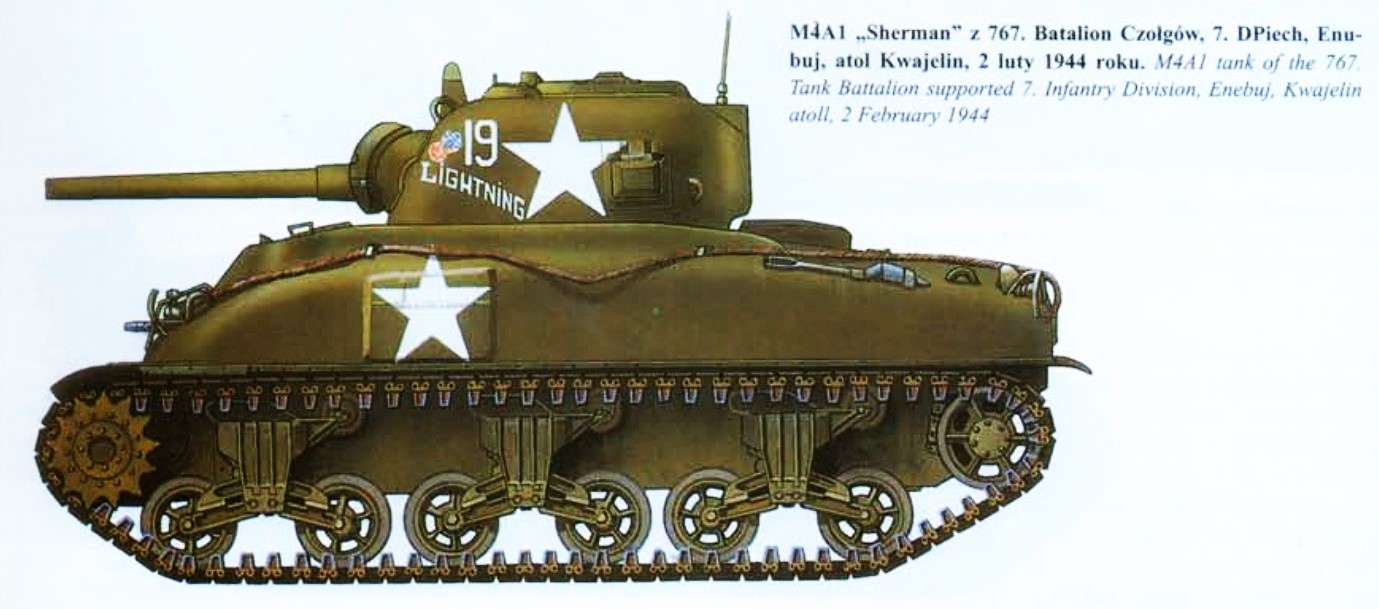
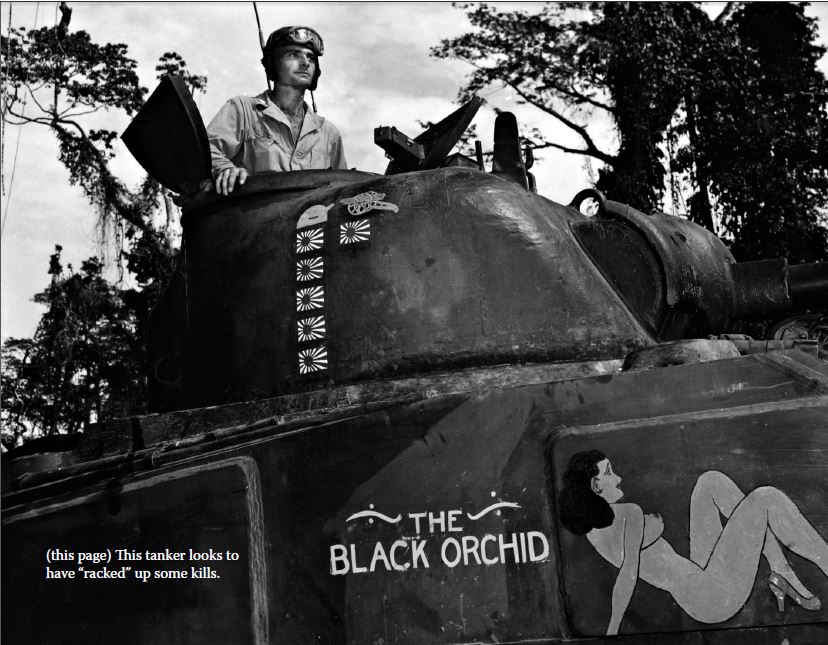
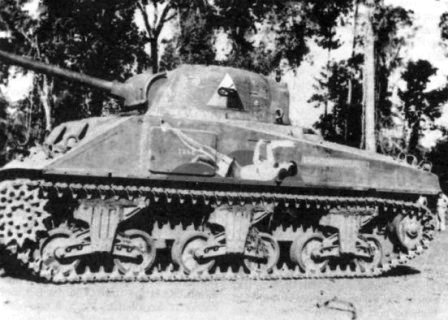
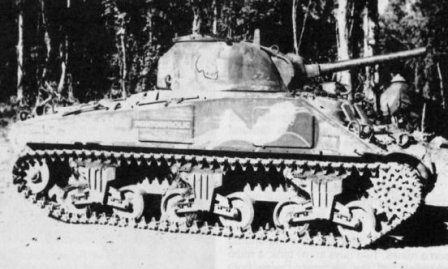
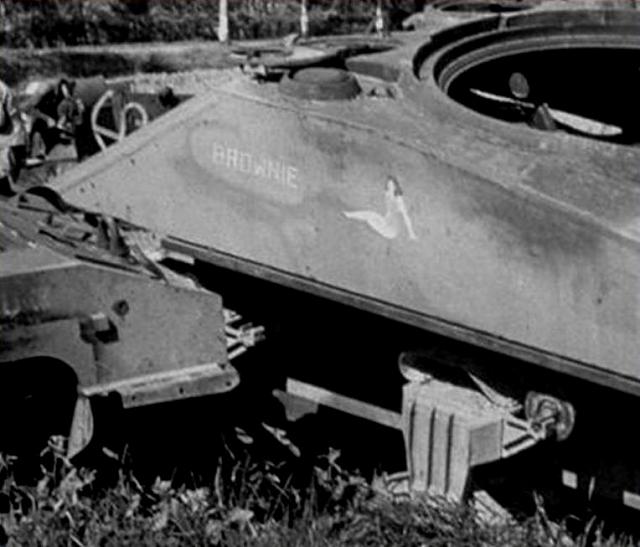
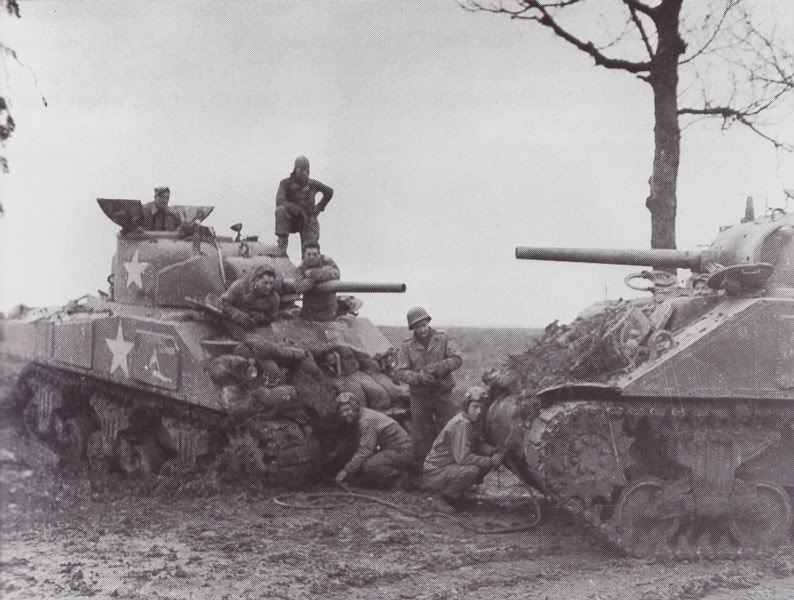
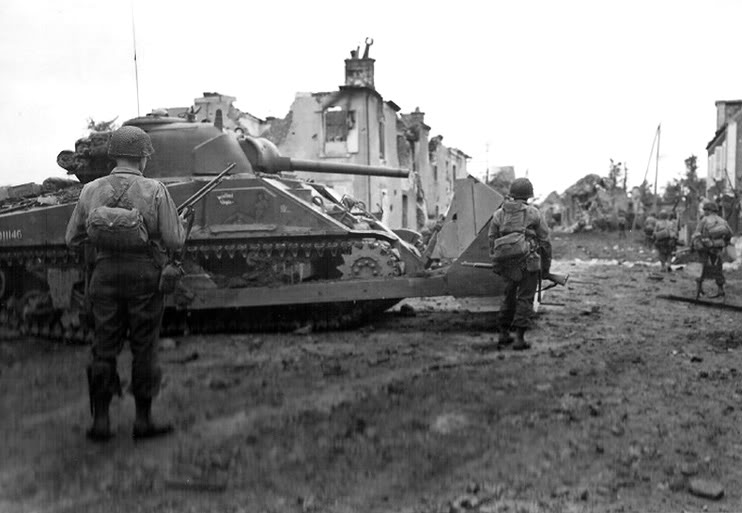


















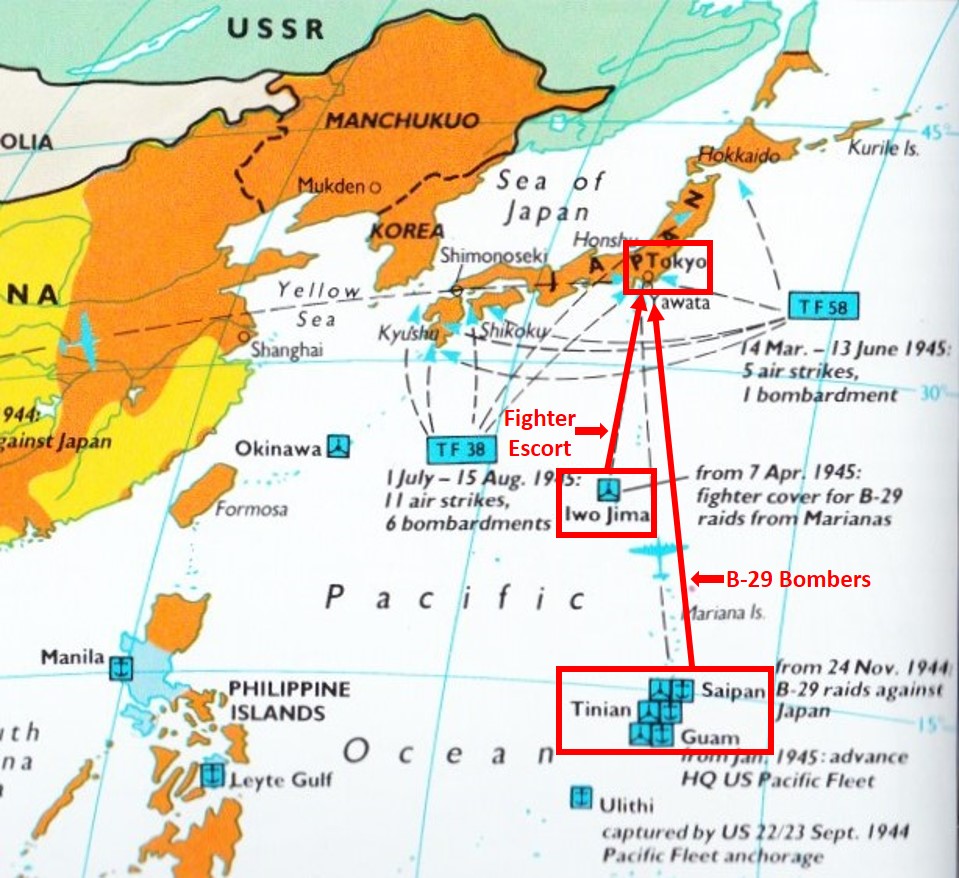
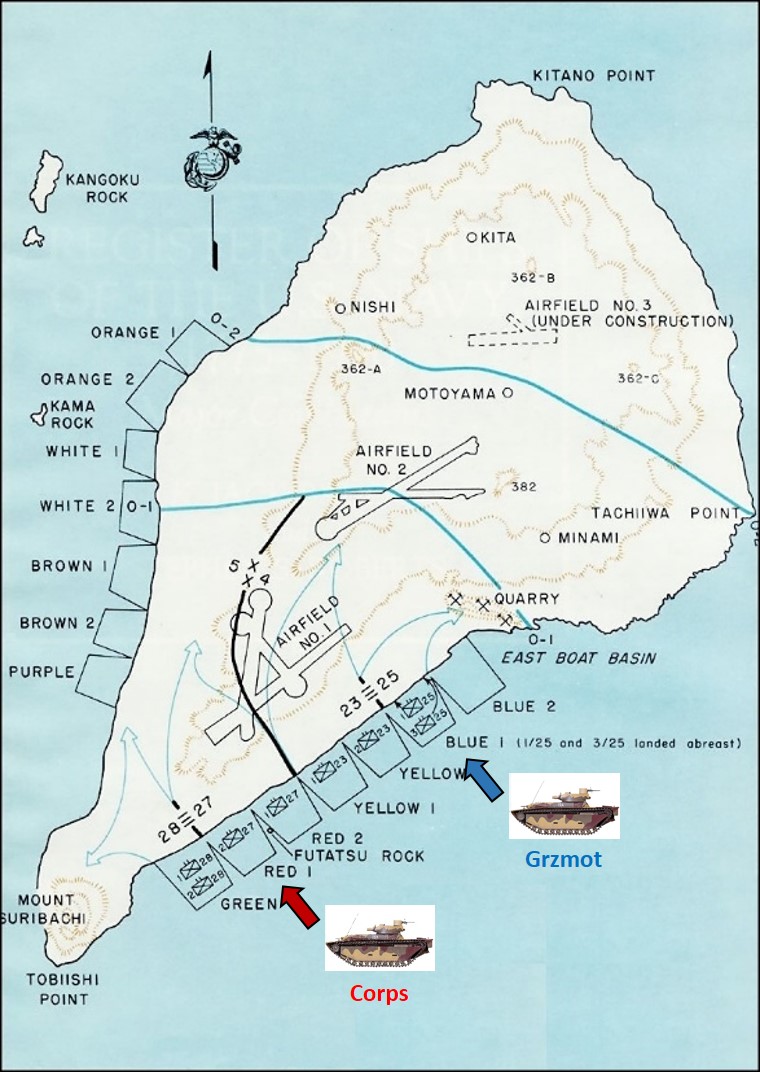
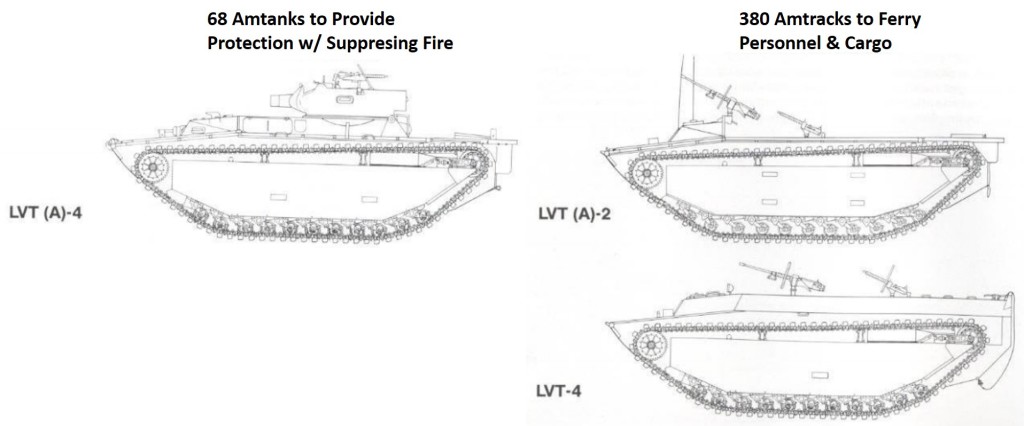
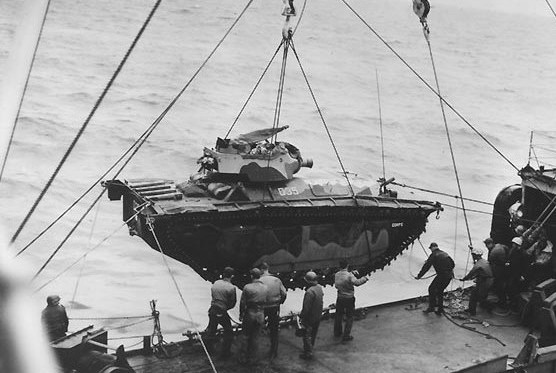

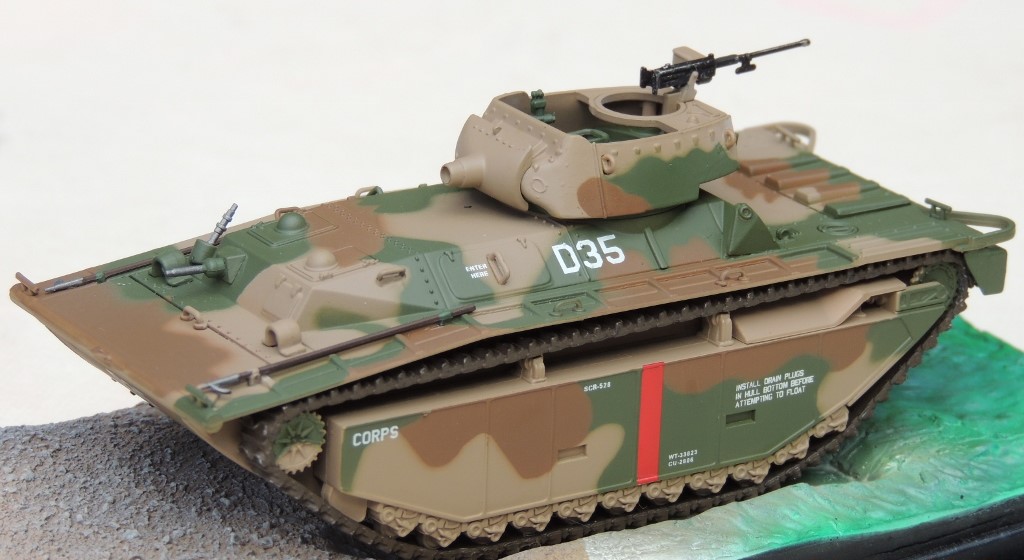

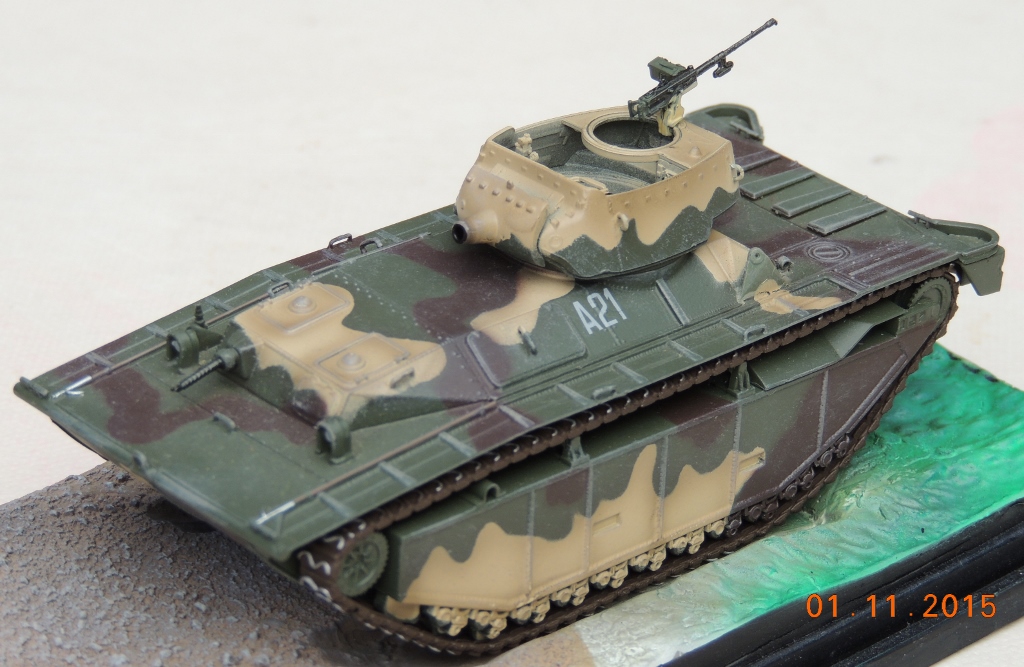
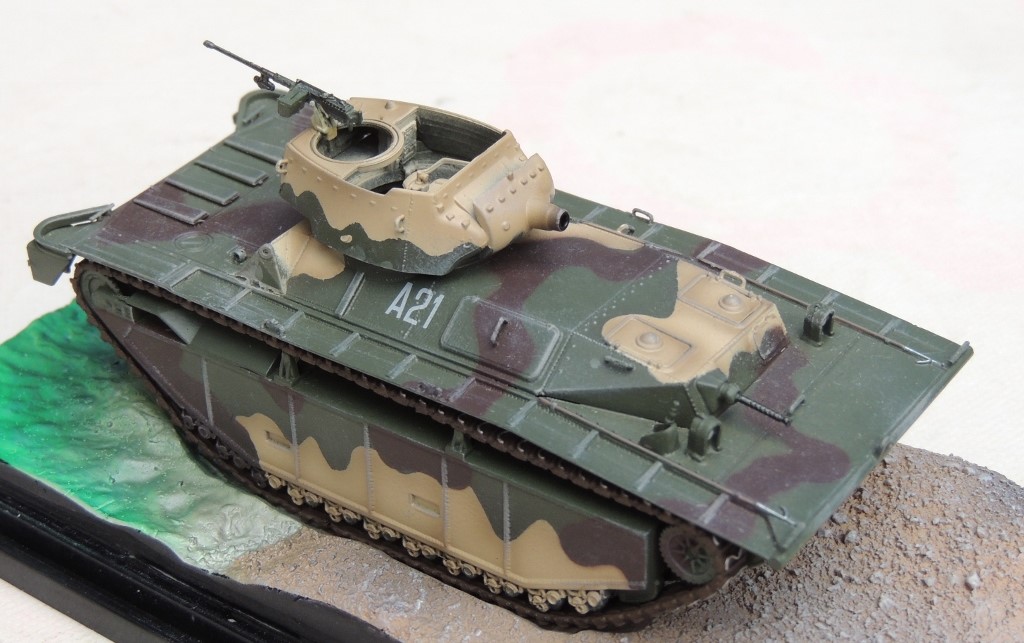
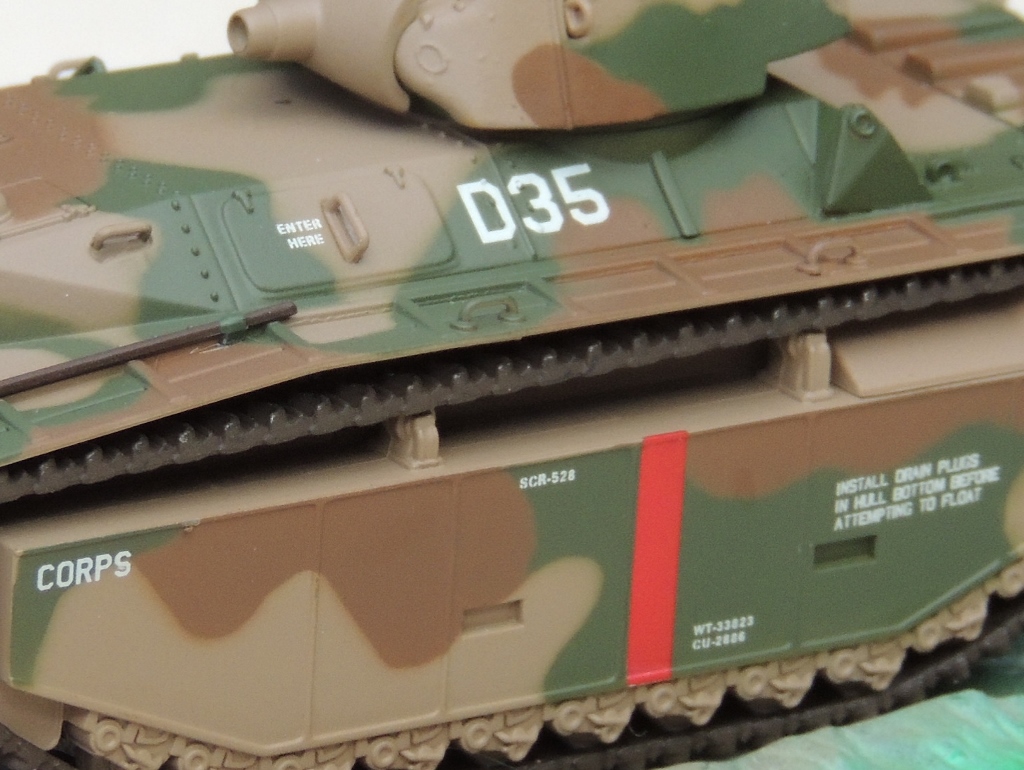
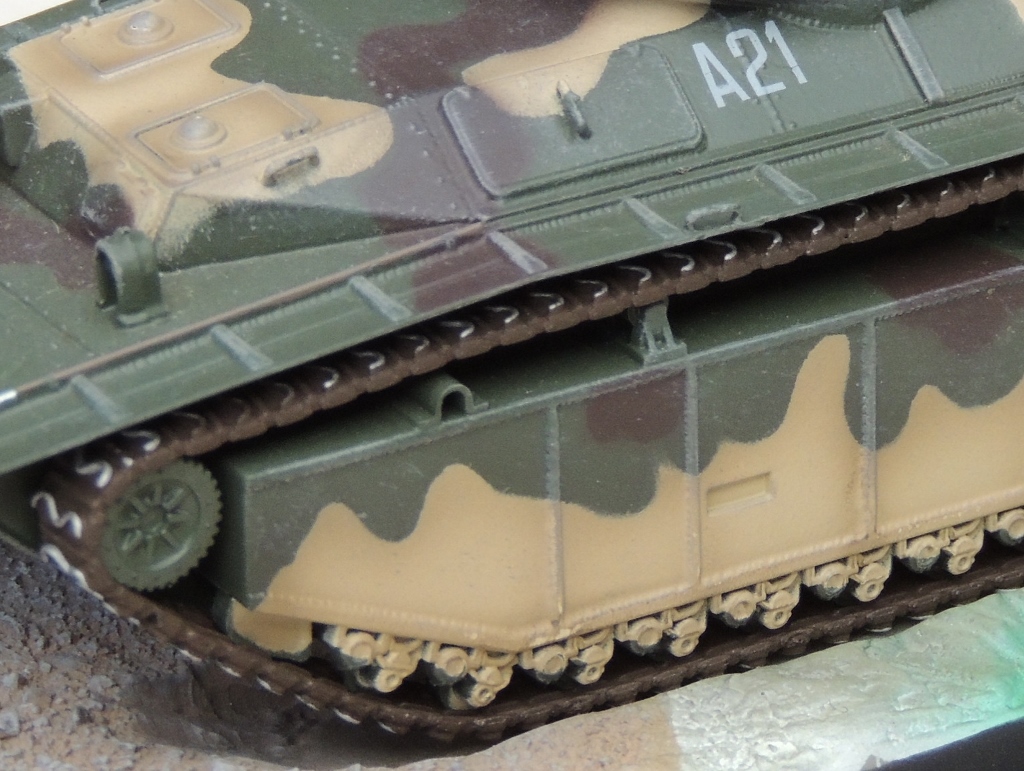
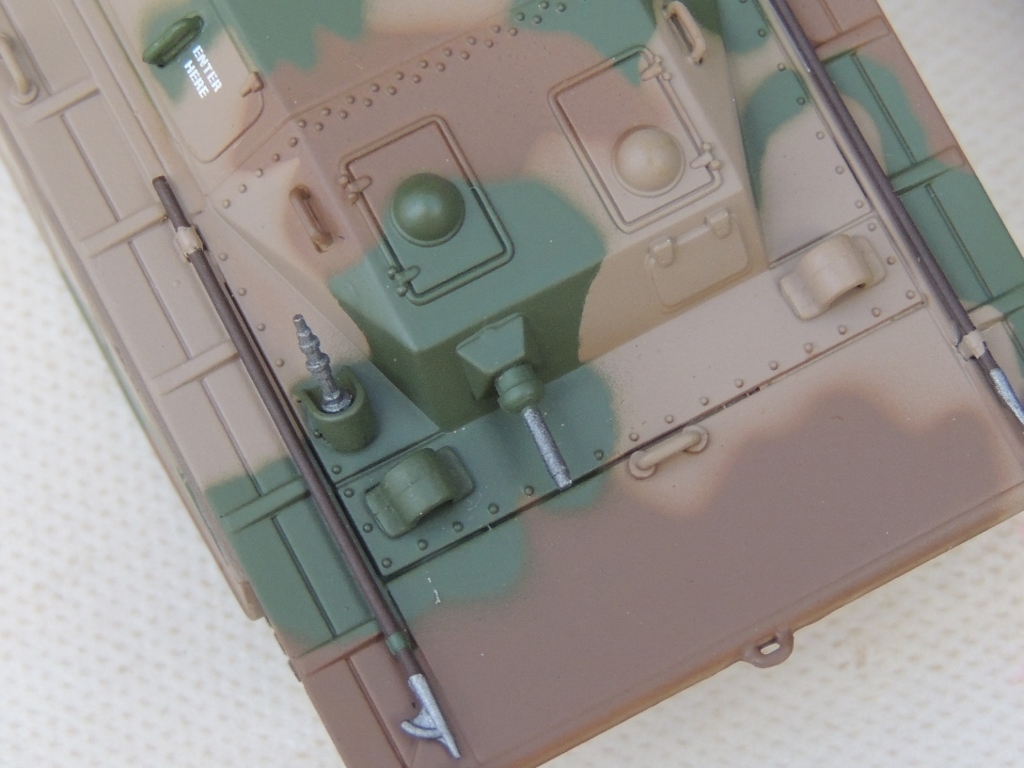

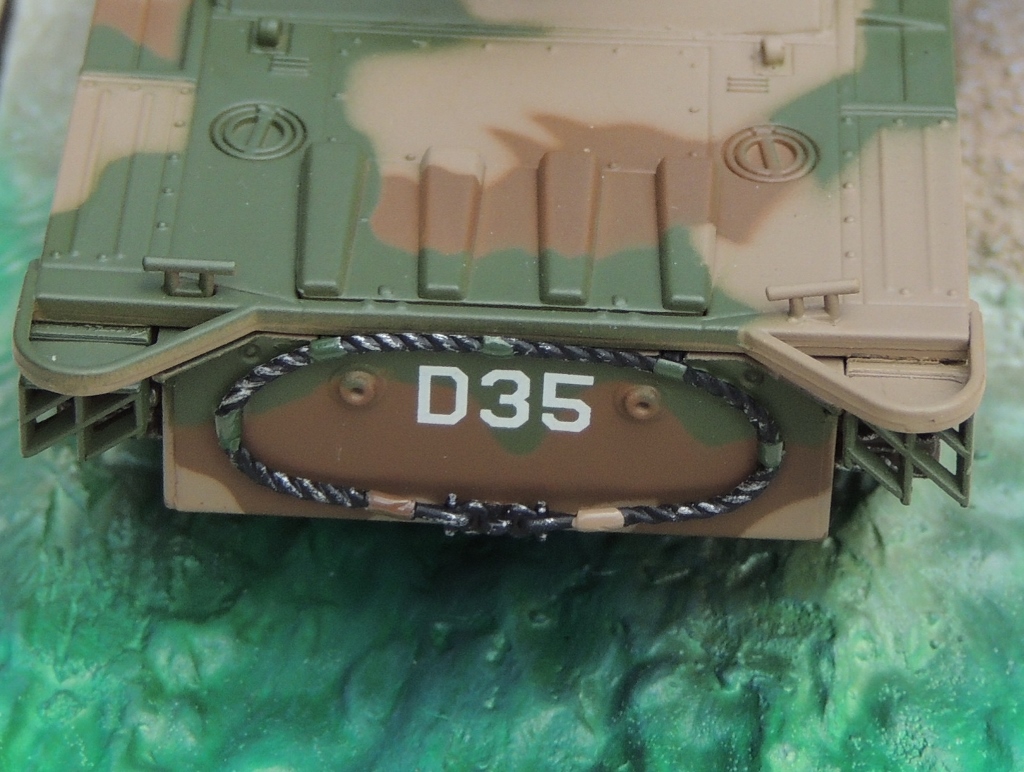
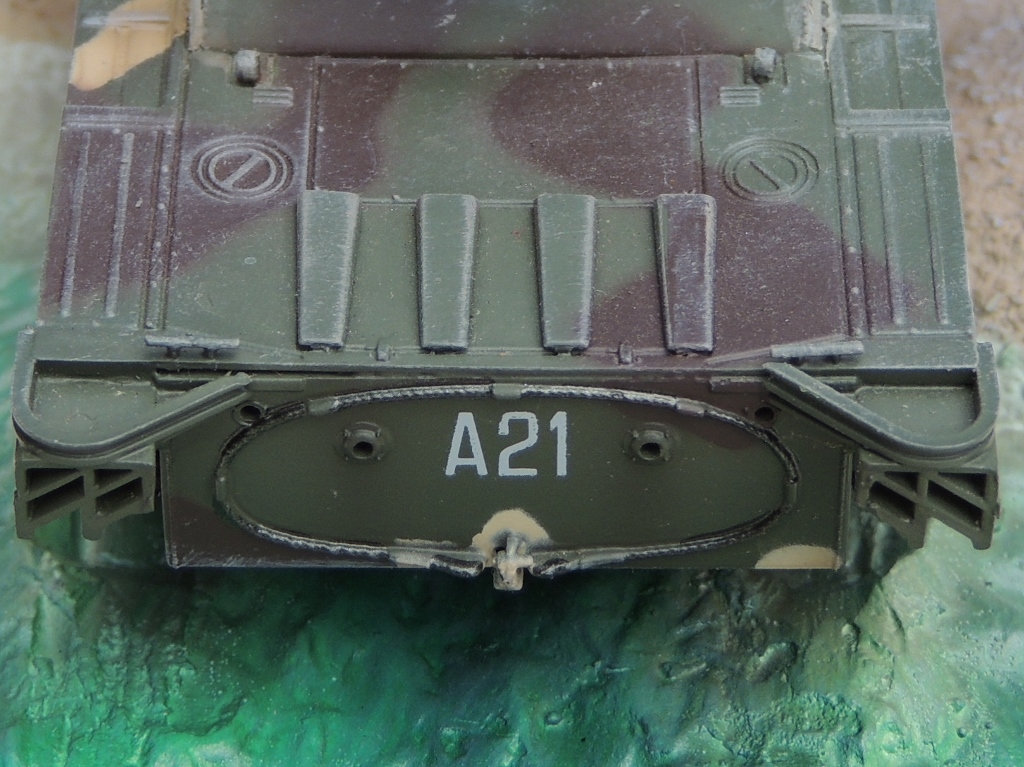
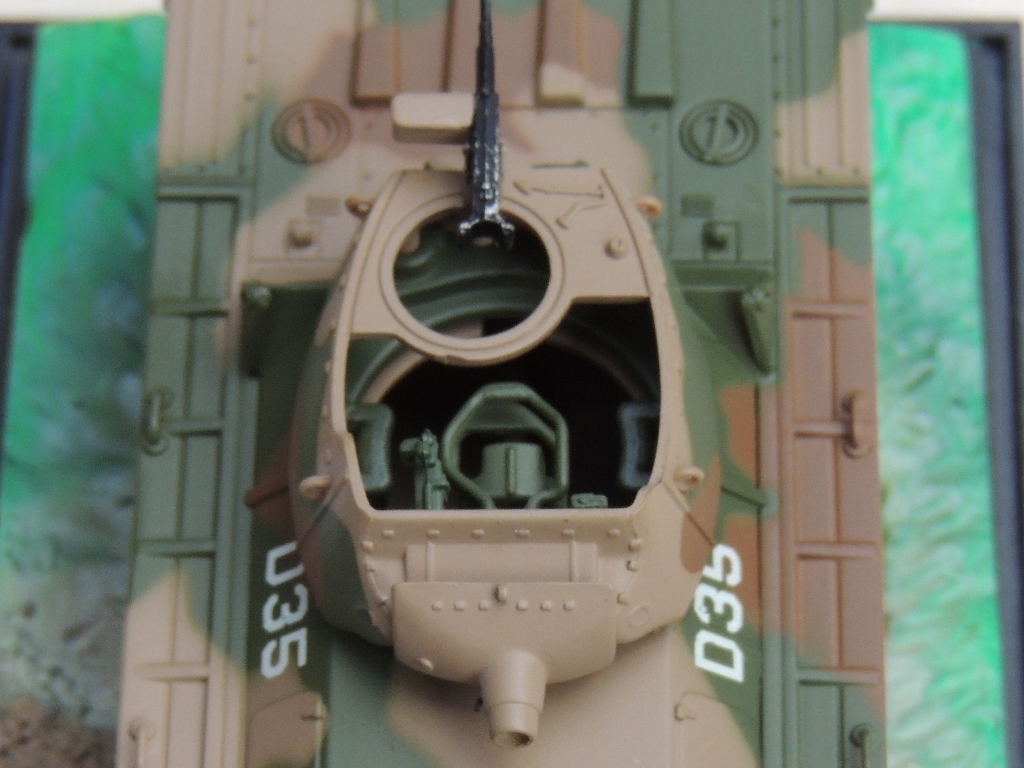
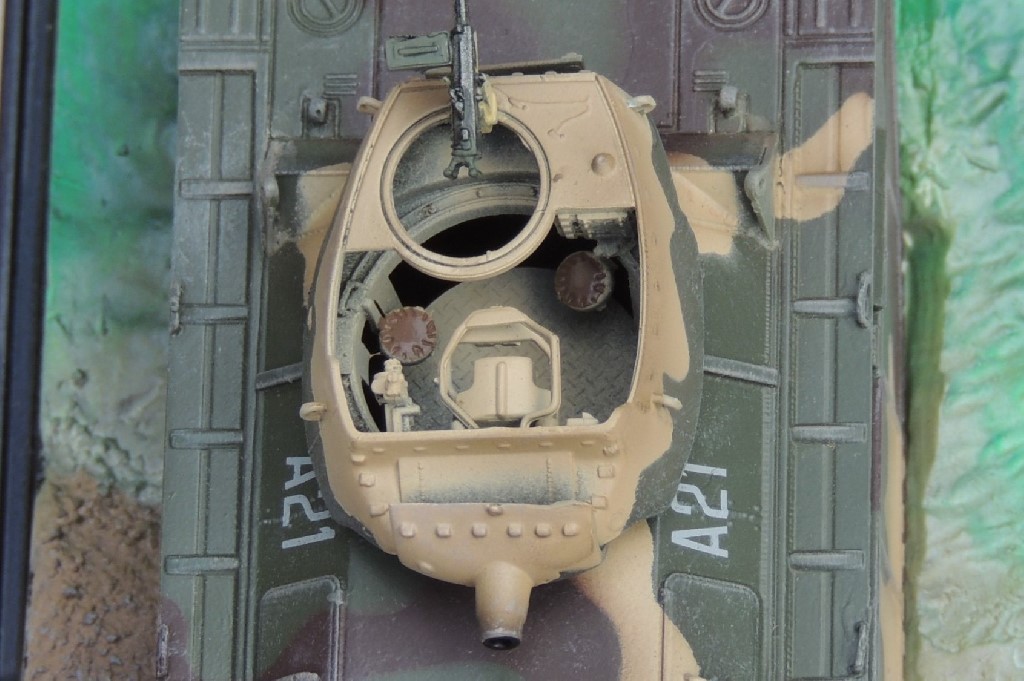

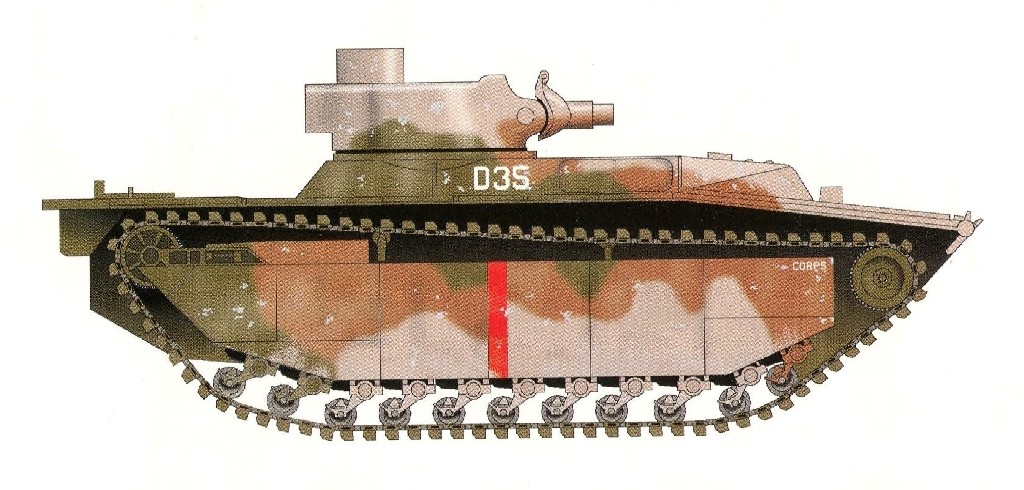
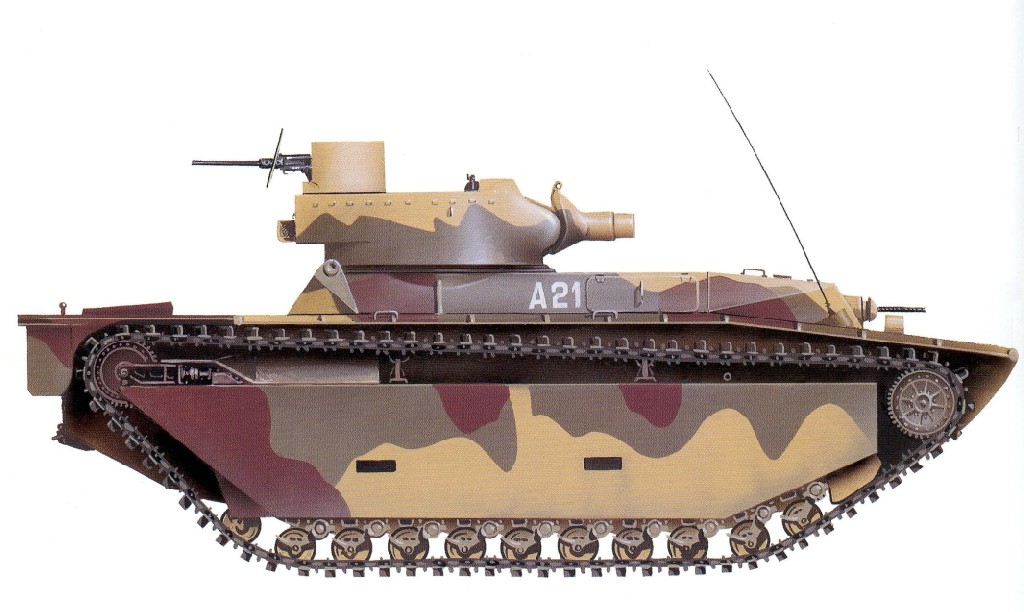
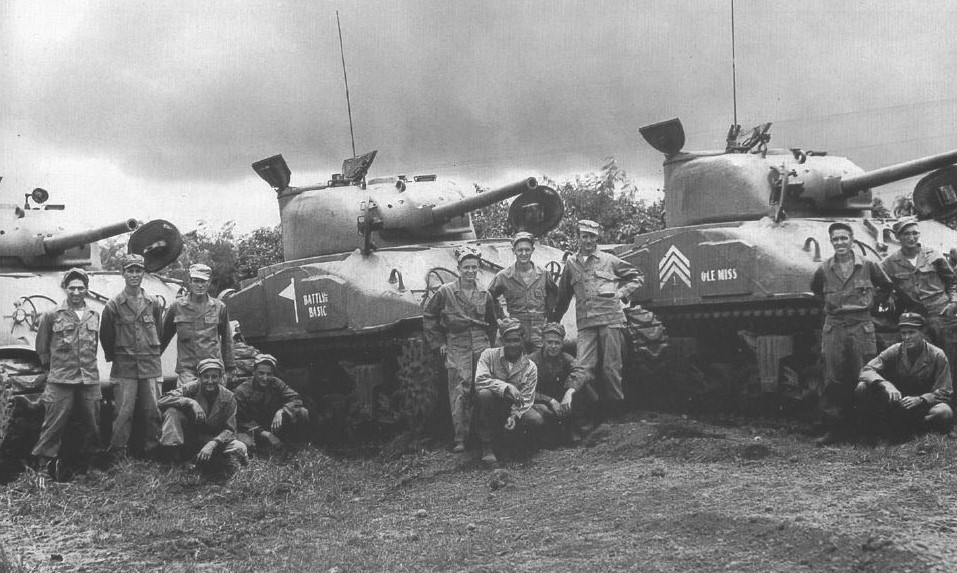
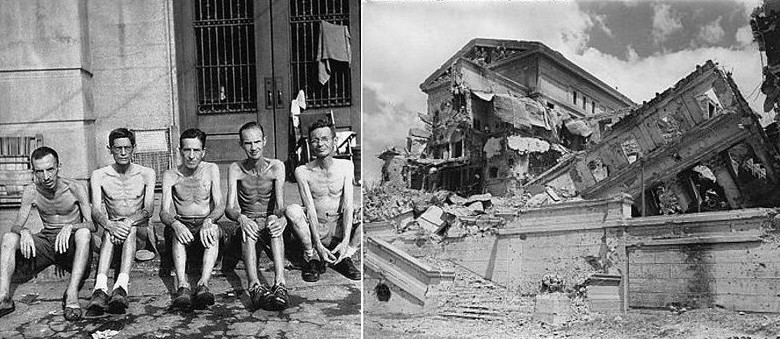
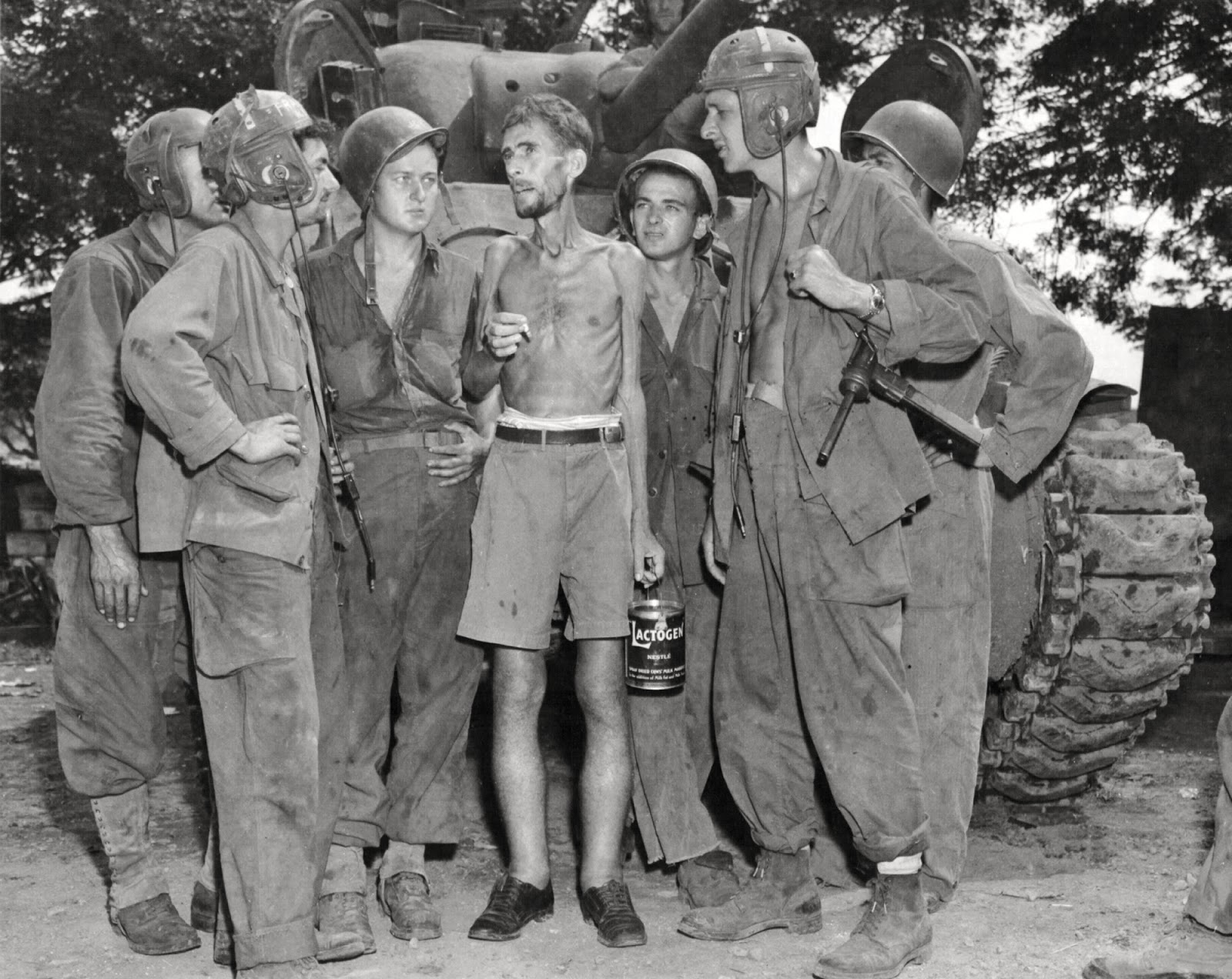
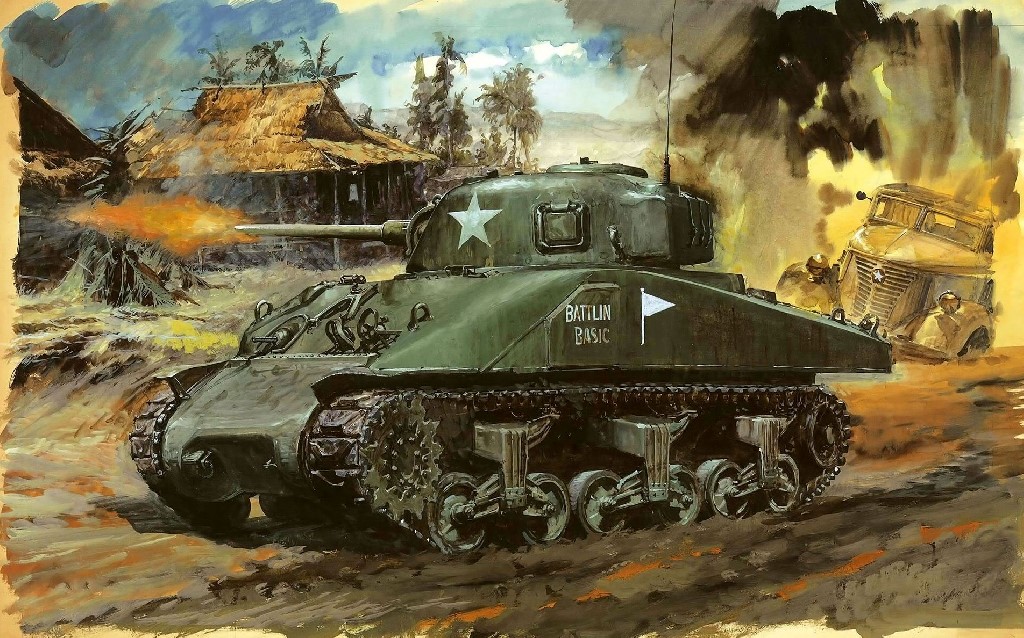

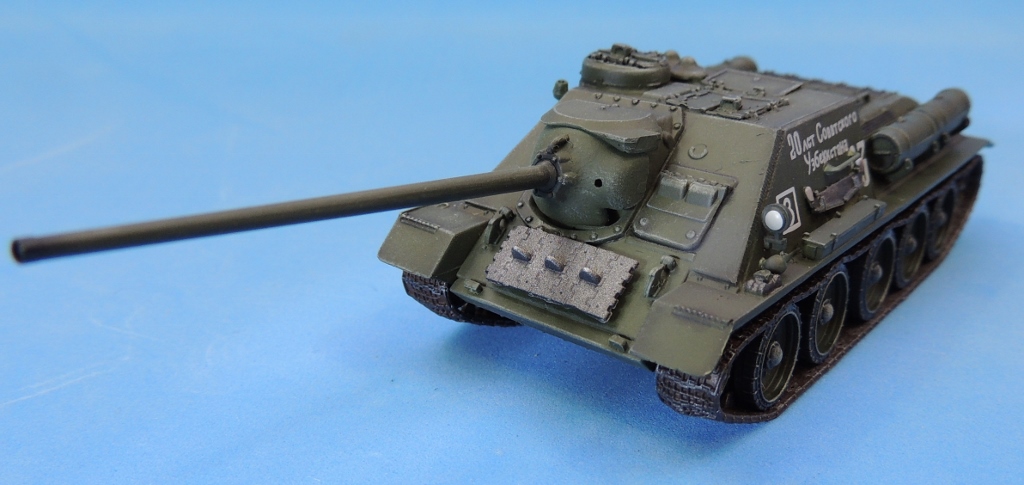
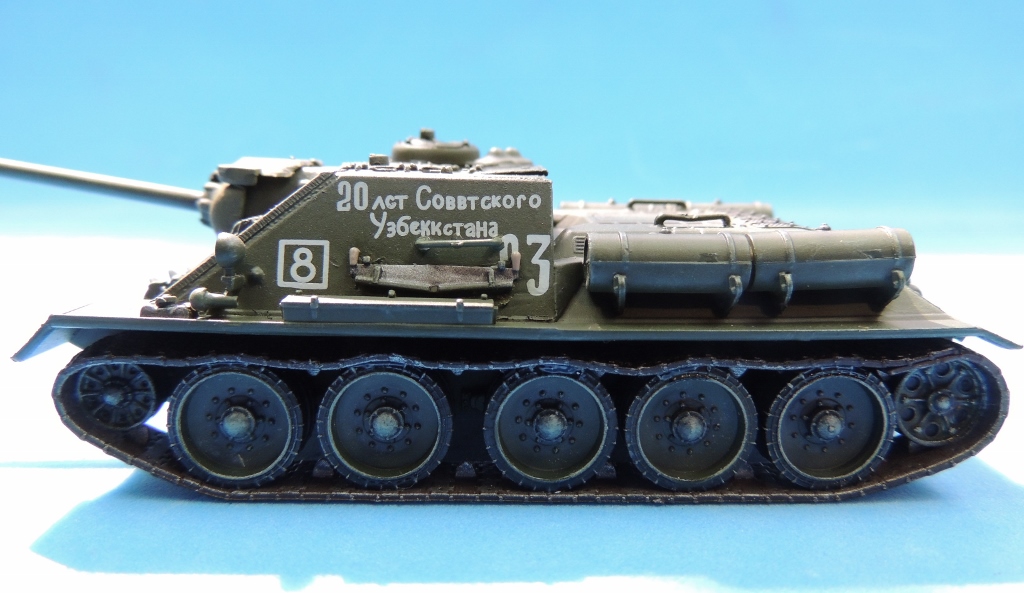
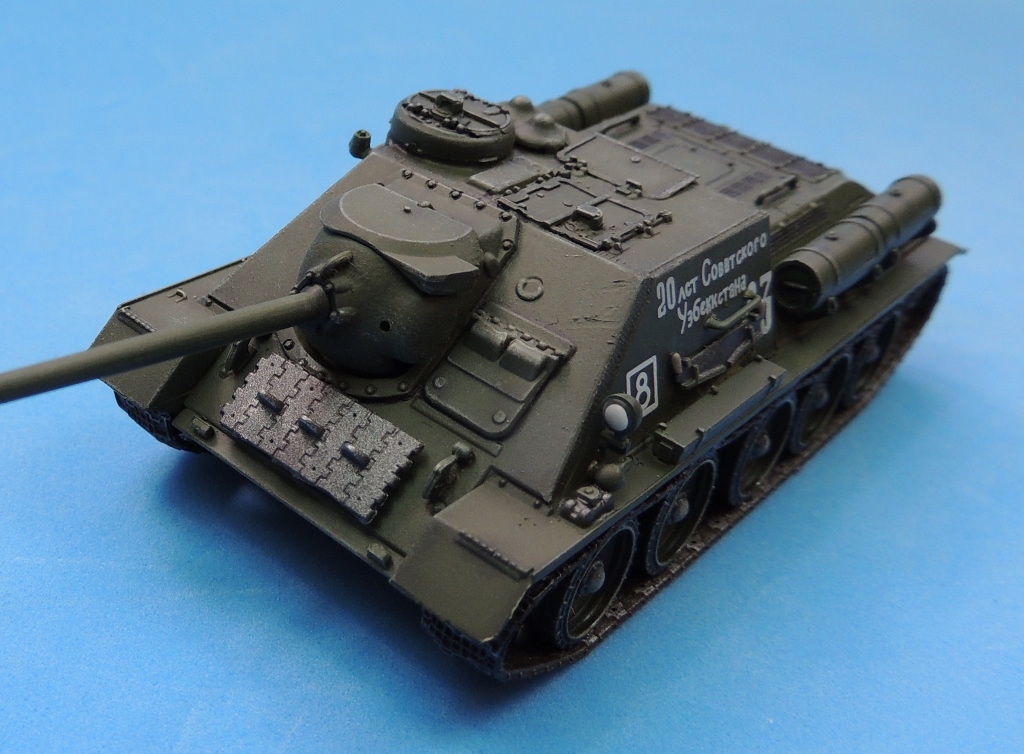
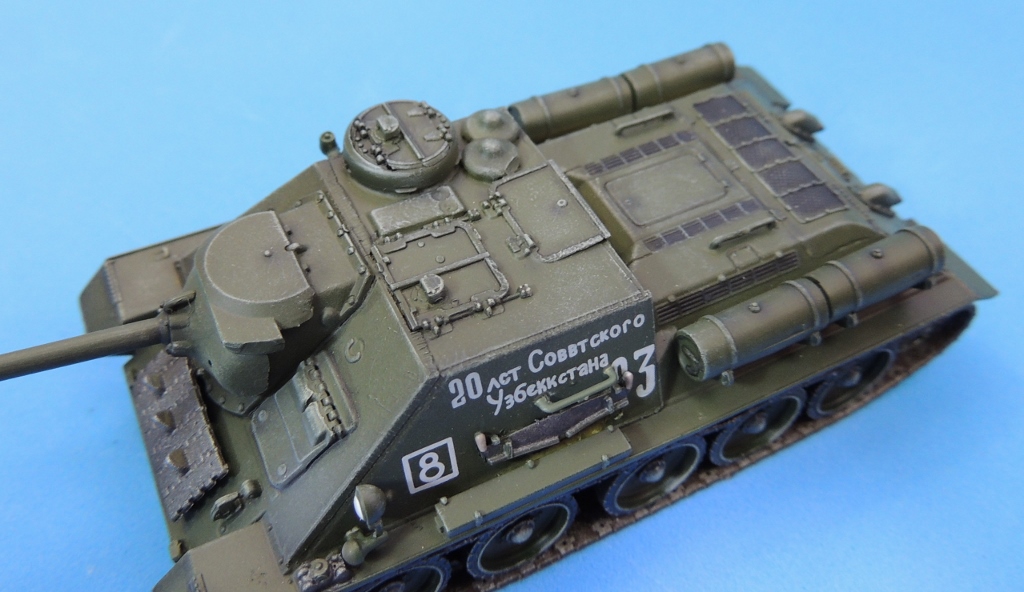
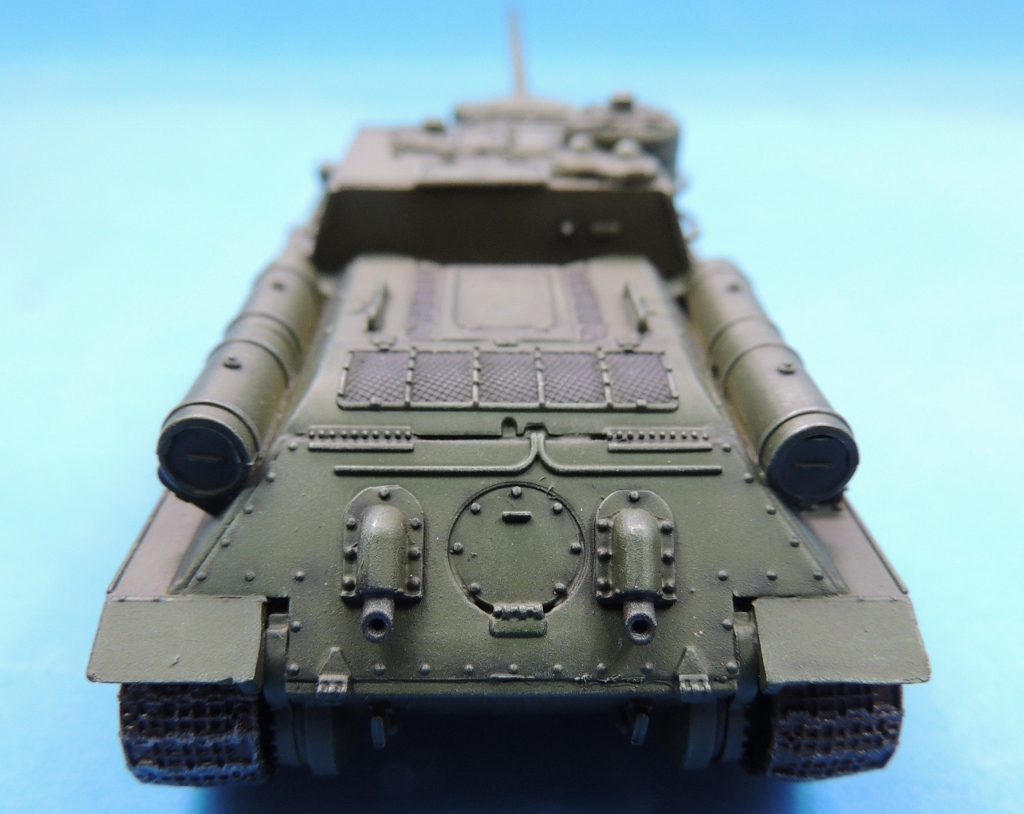
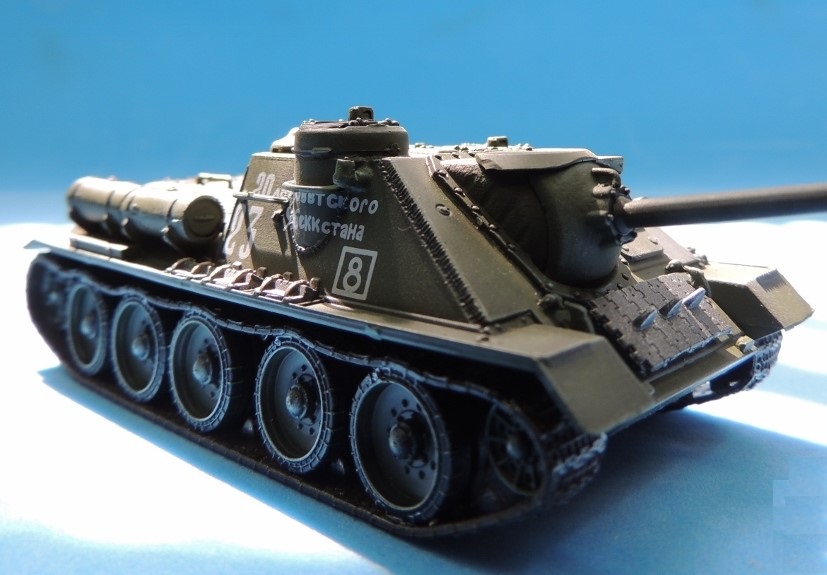
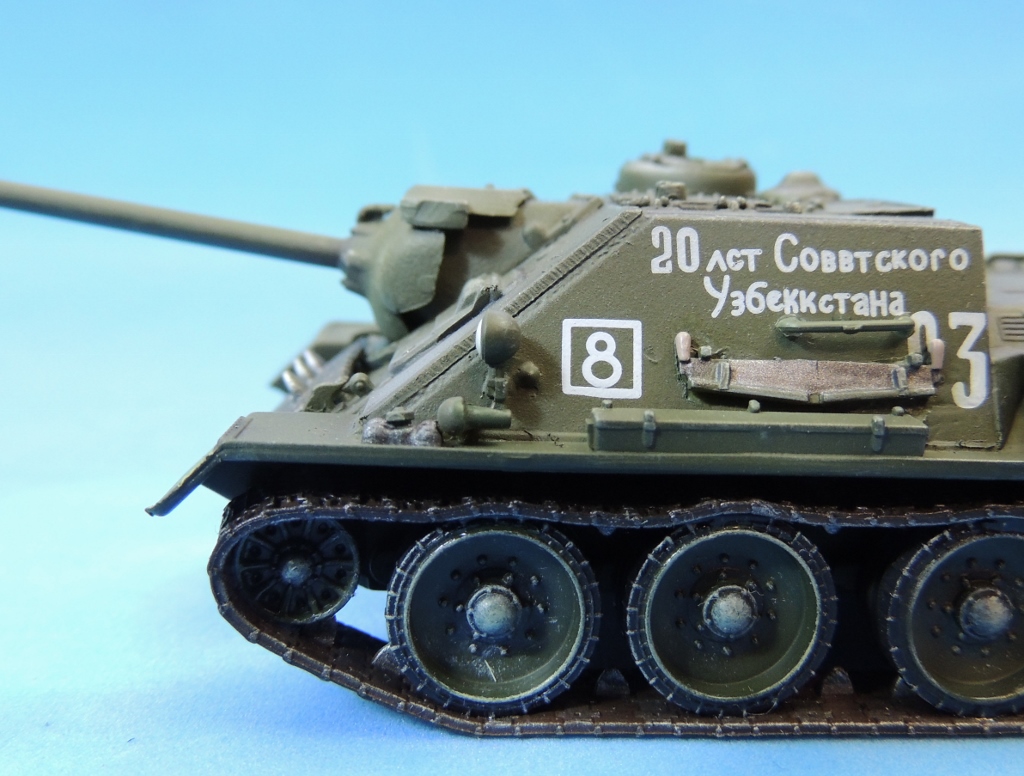

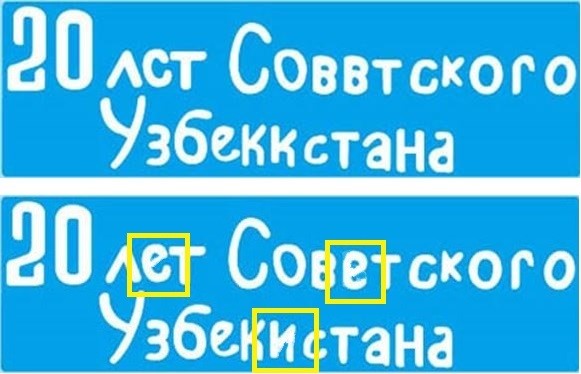
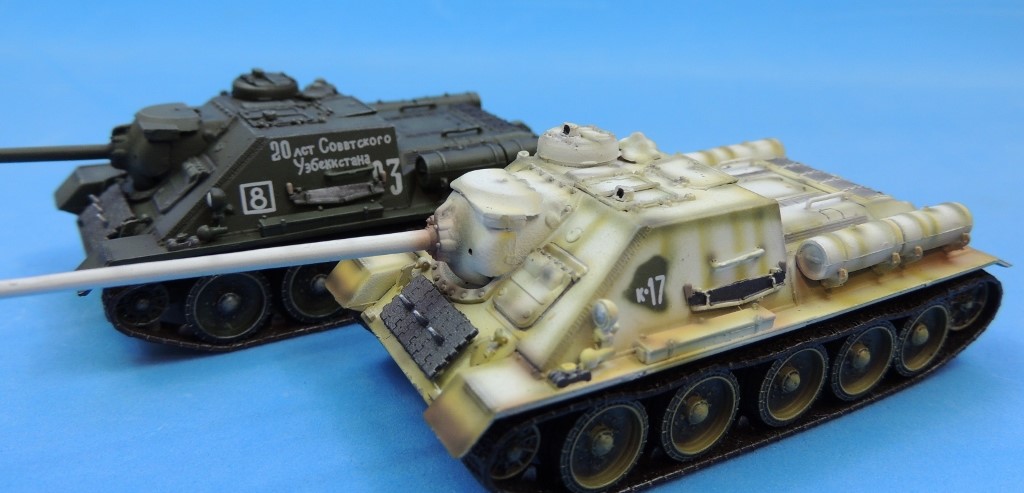

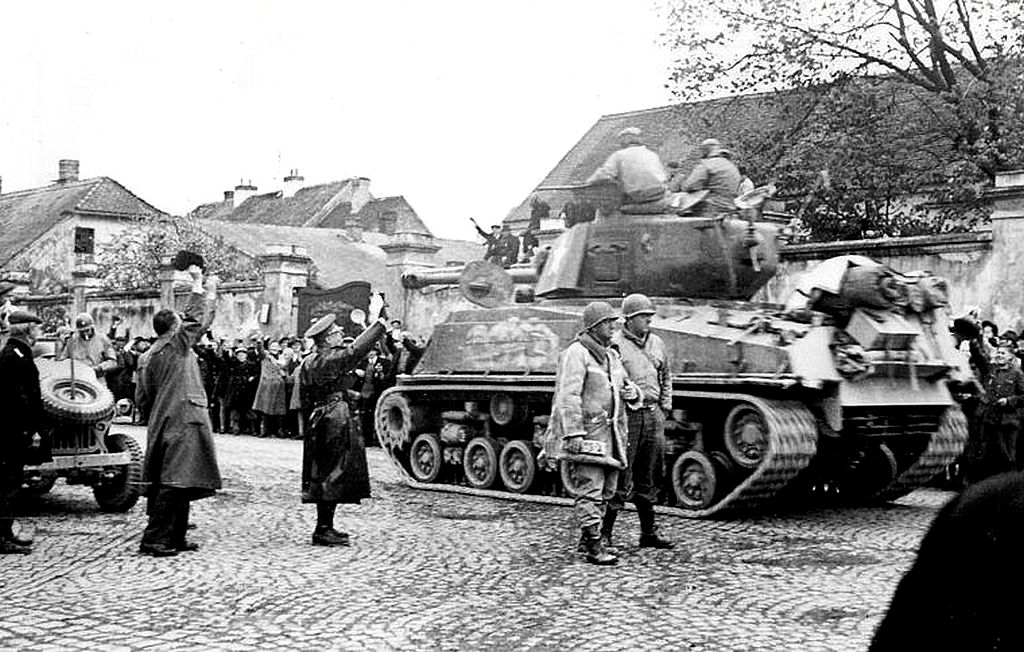
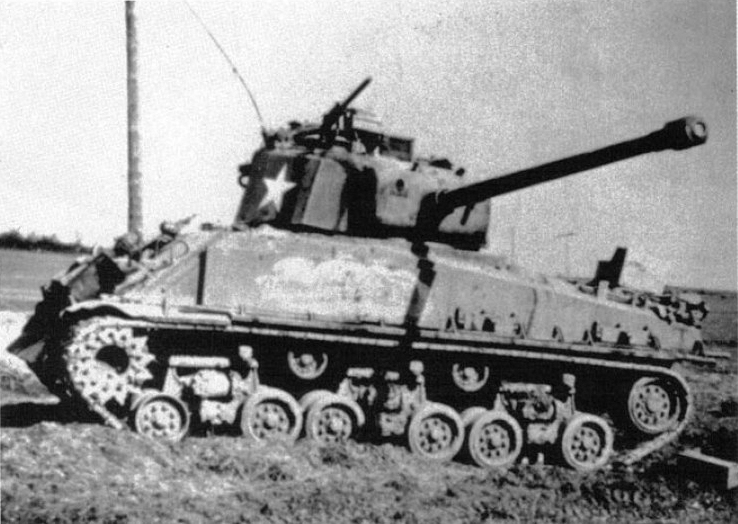
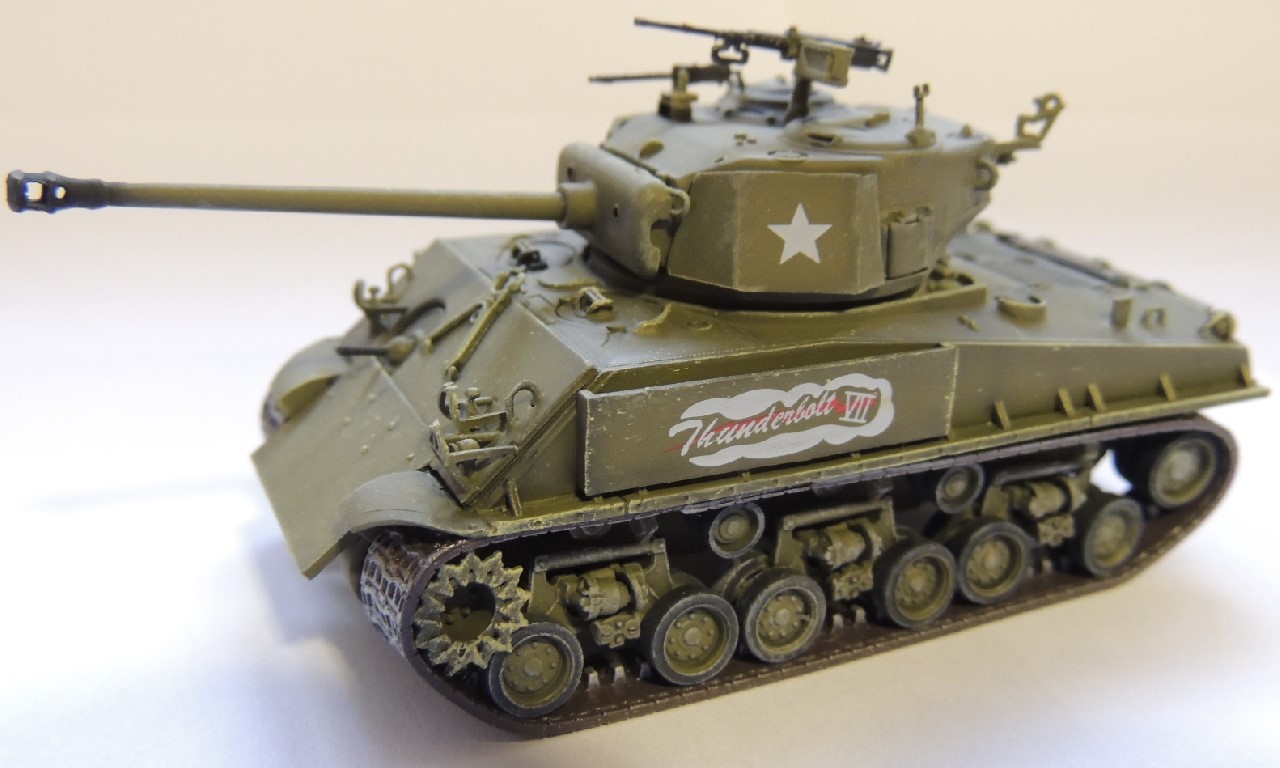
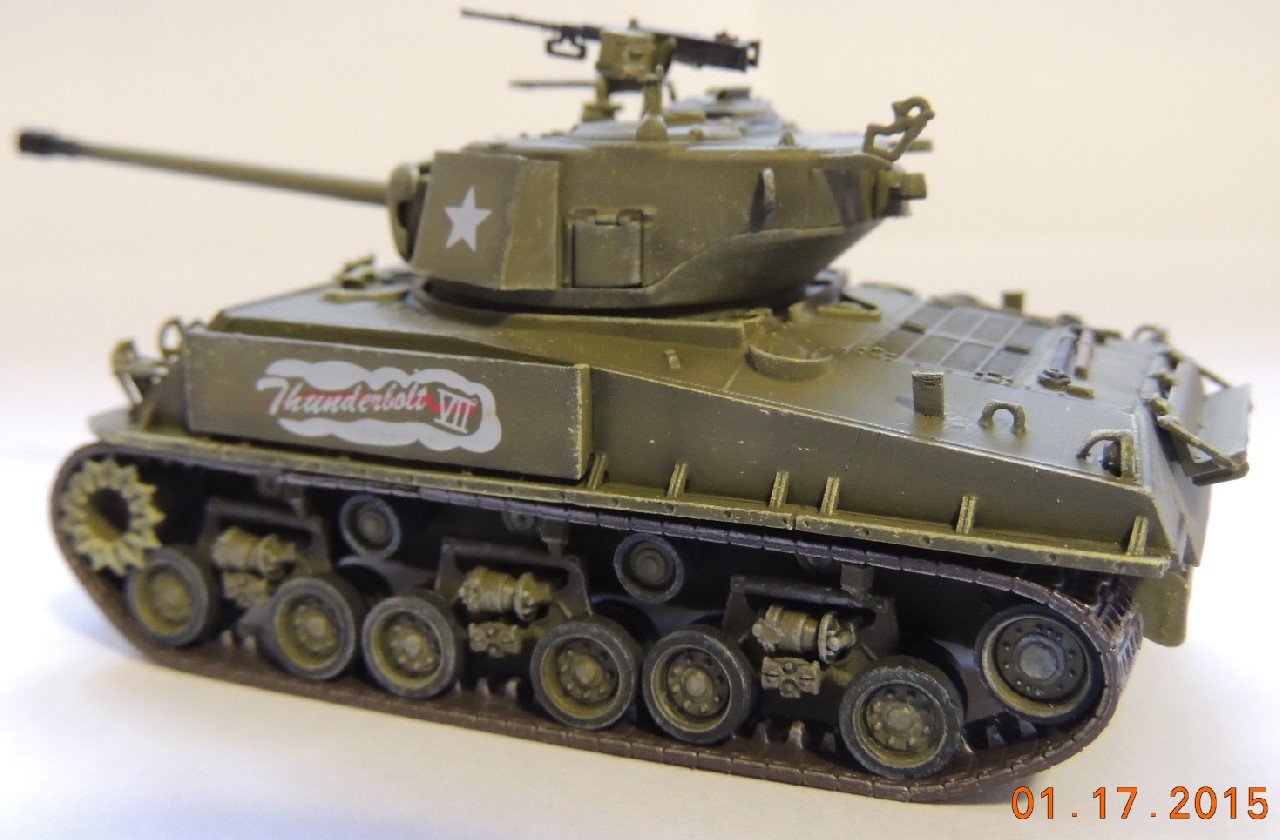
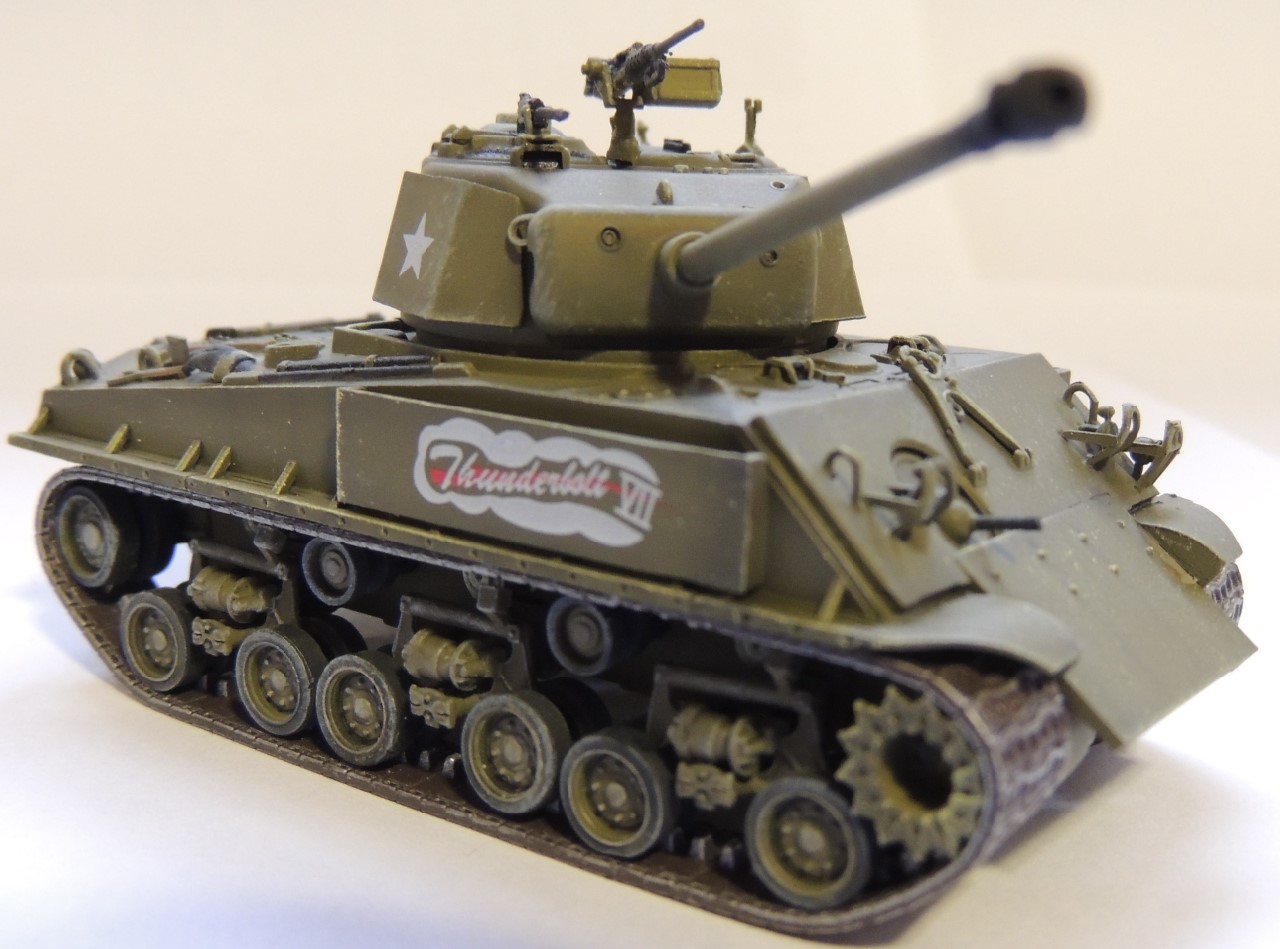
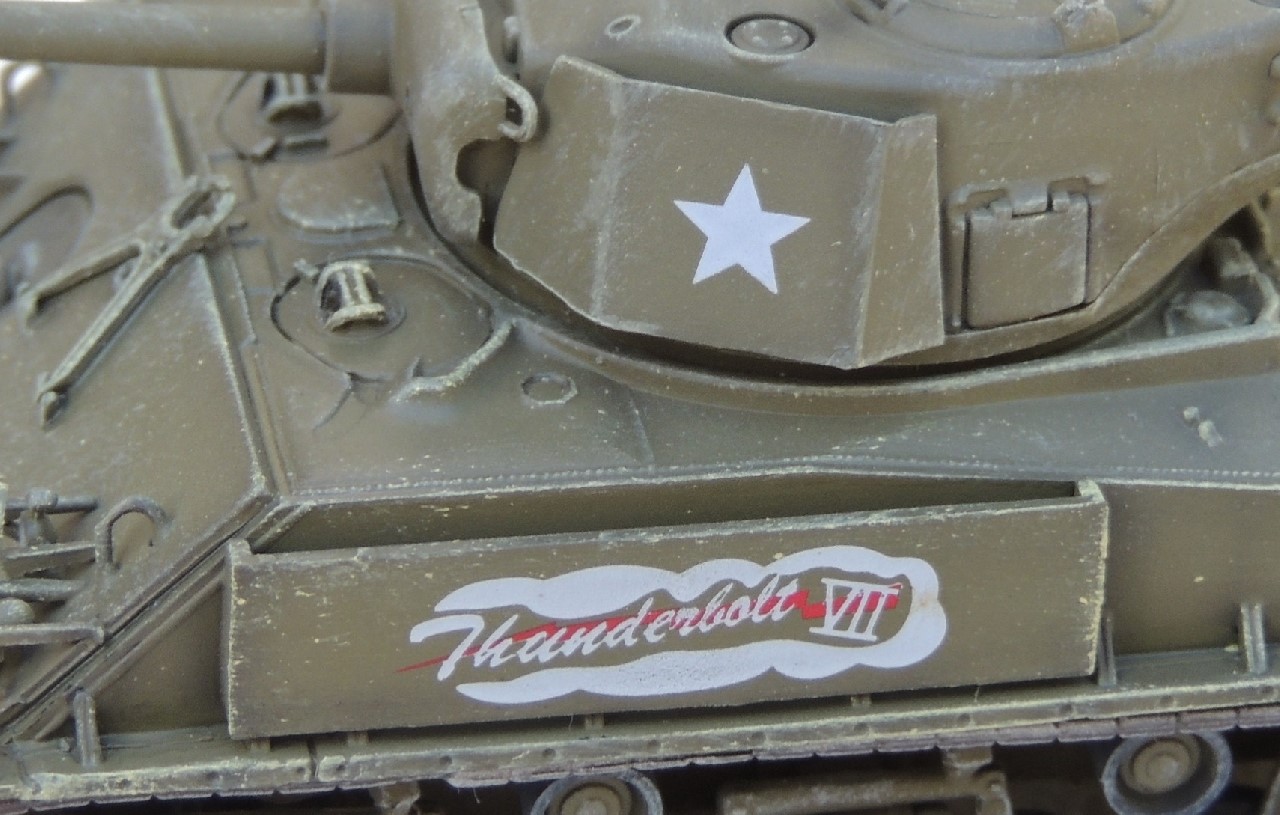


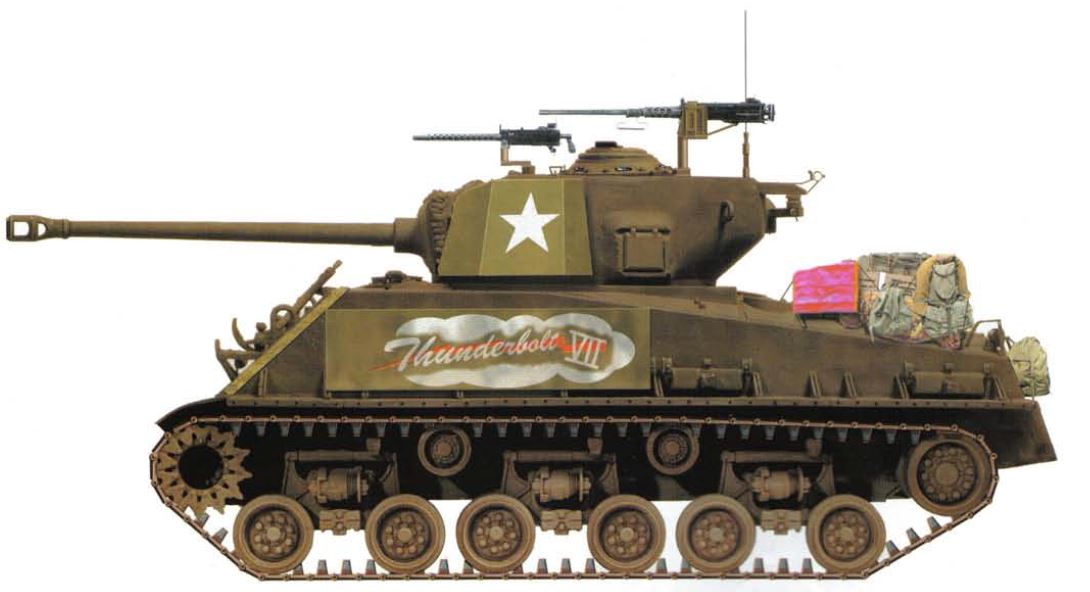
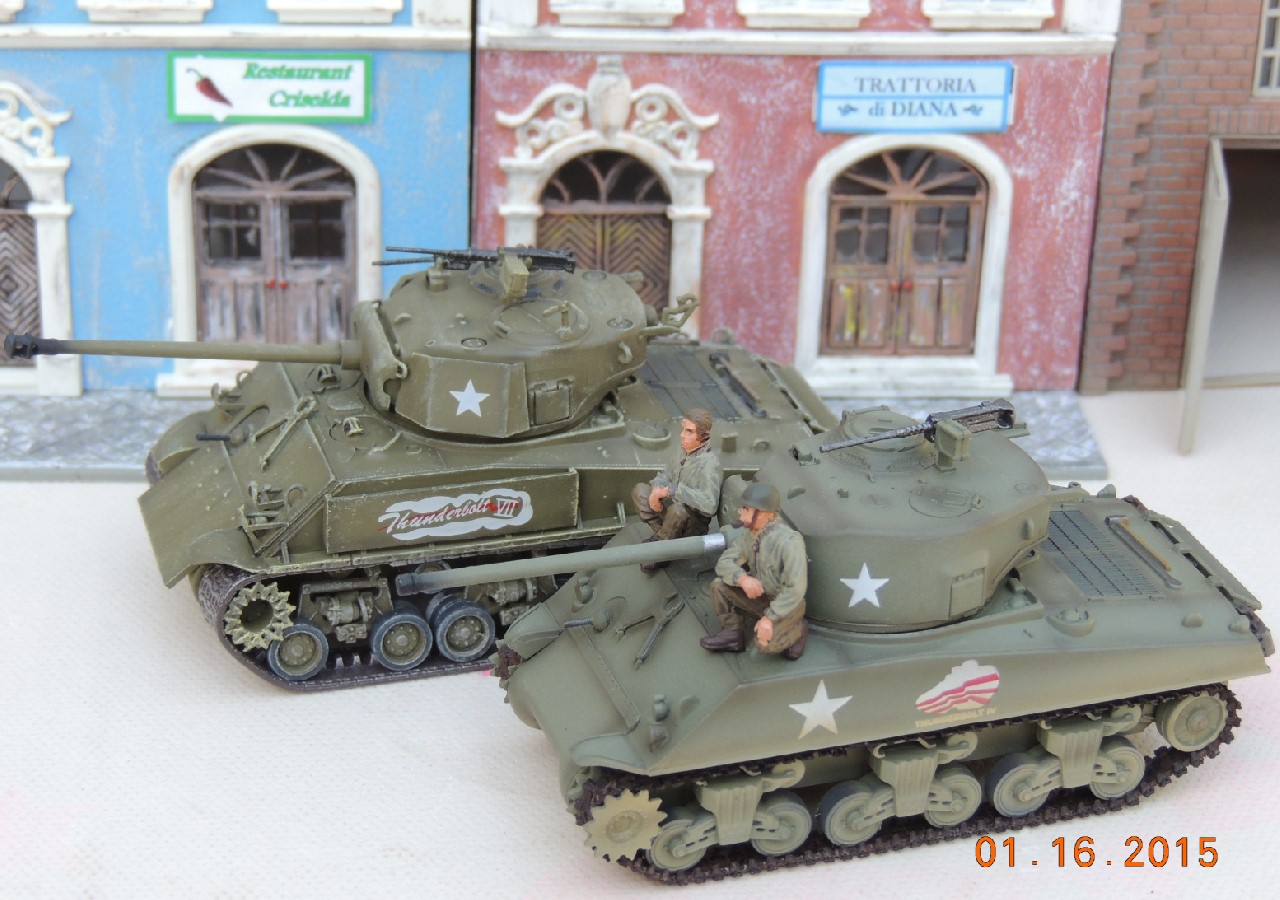




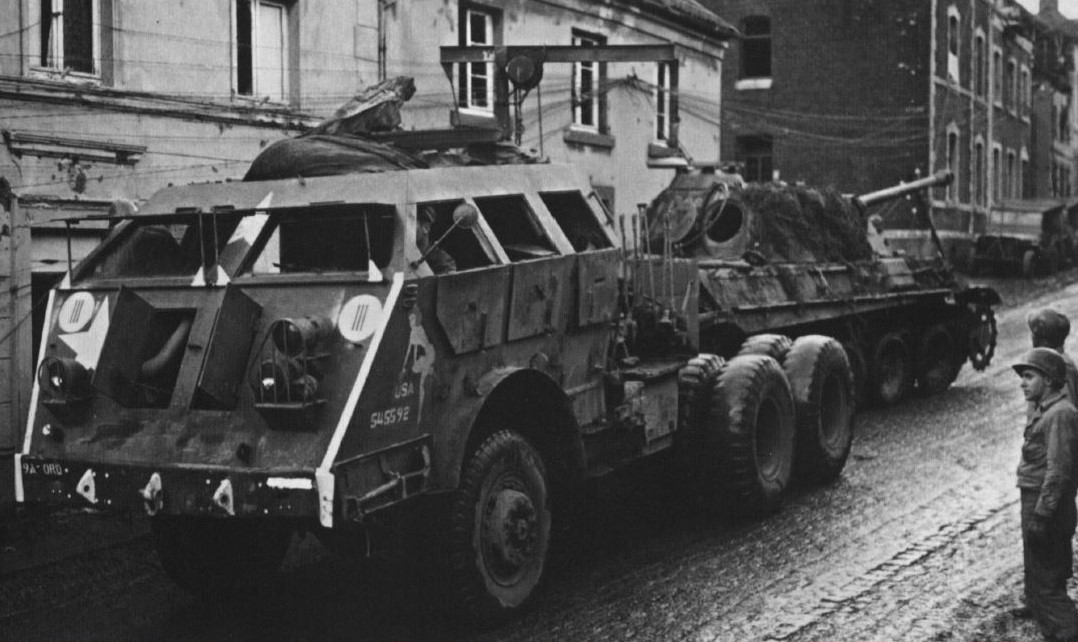
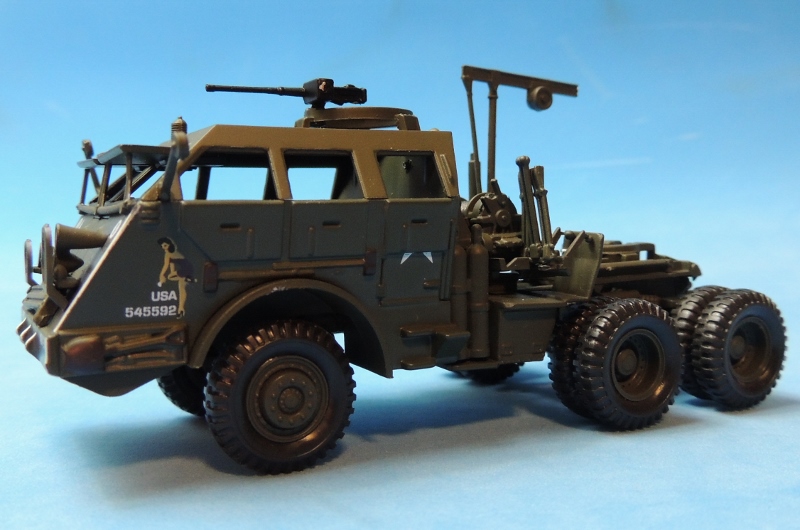
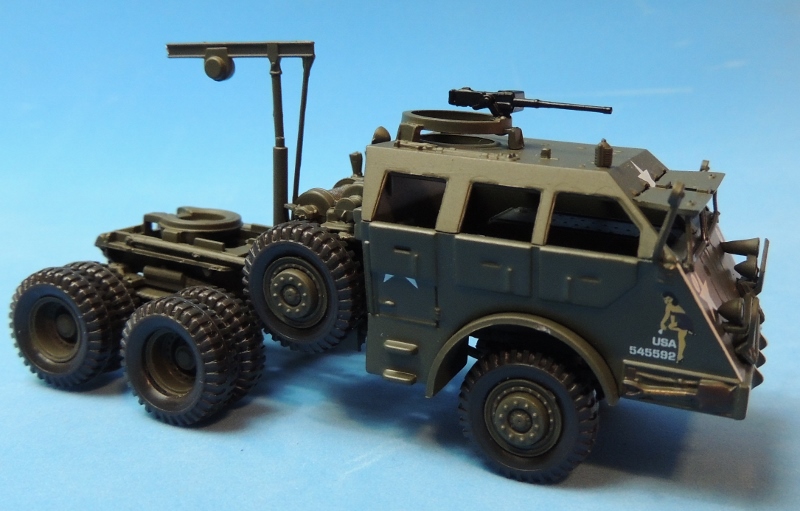
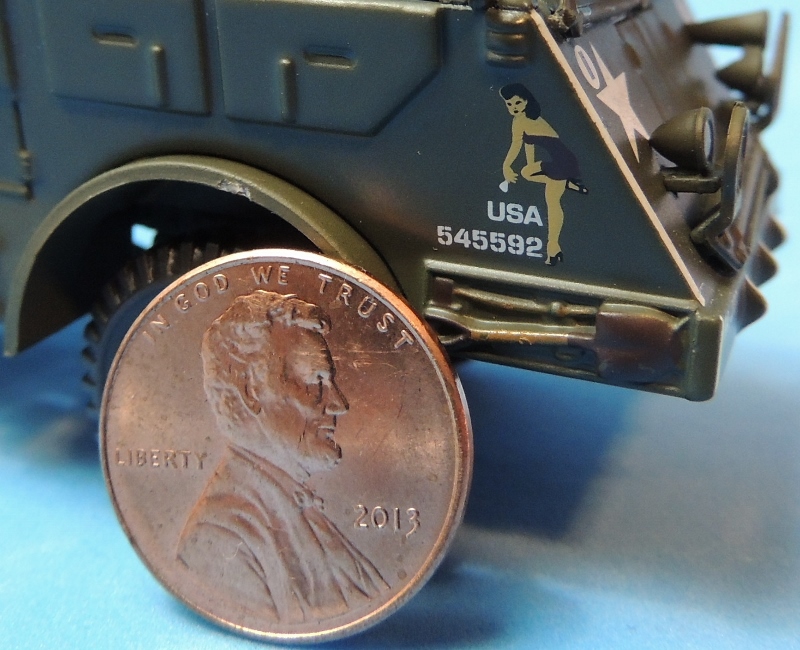
 I would respectfully ask that anybody who knows of other pin-ups on 1/72 models or photos of non-aircraft WWII vehicles with pin-up art post a comment. Perhaps at some point in the future someone will use our collective research to write a book on the subject — a book that is sorely missing at the moment.
I would respectfully ask that anybody who knows of other pin-ups on 1/72 models or photos of non-aircraft WWII vehicles with pin-up art post a comment. Perhaps at some point in the future someone will use our collective research to write a book on the subject — a book that is sorely missing at the moment.
